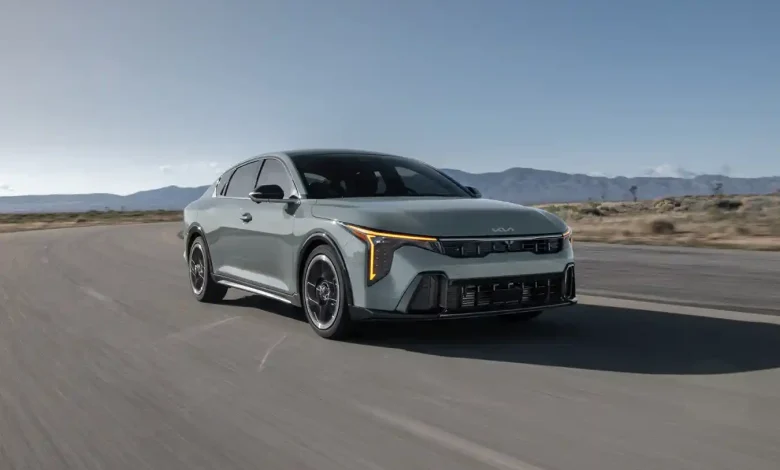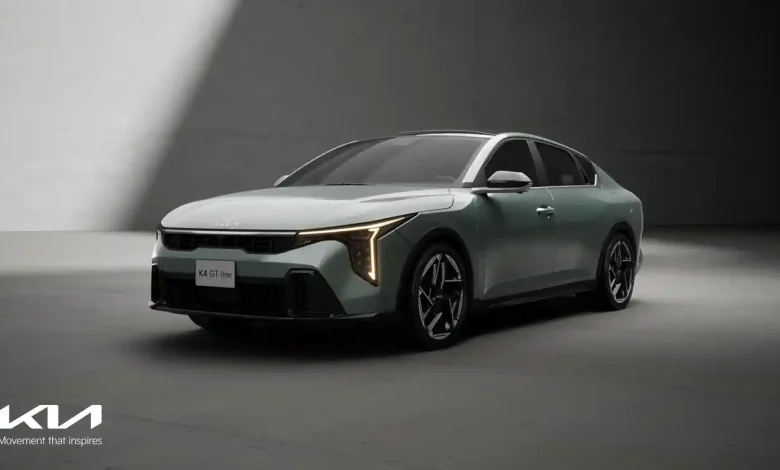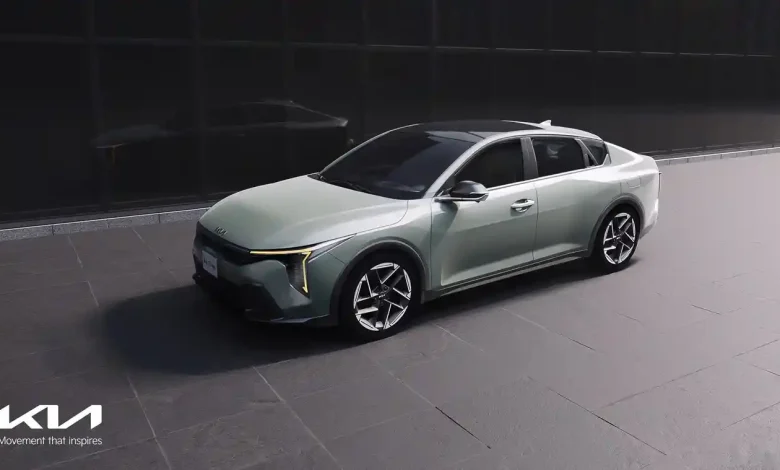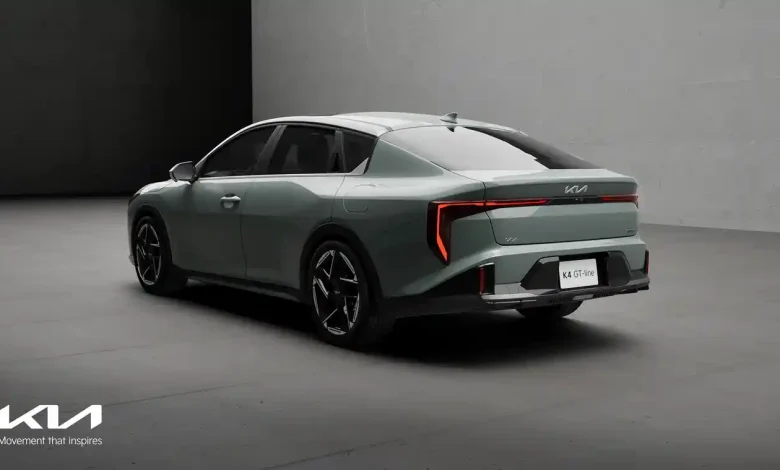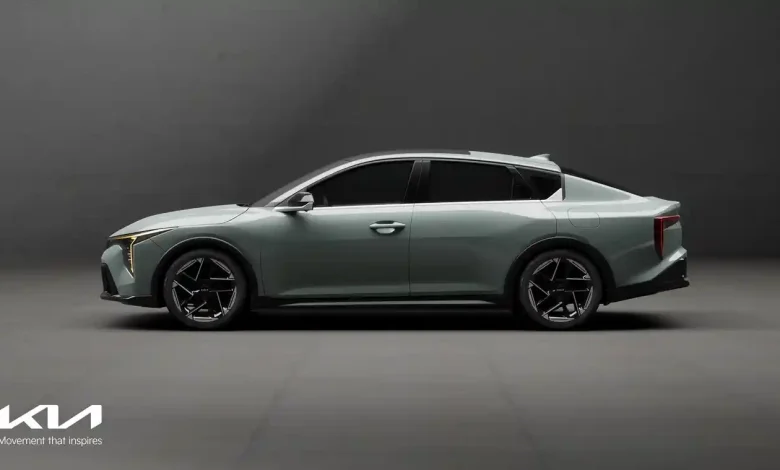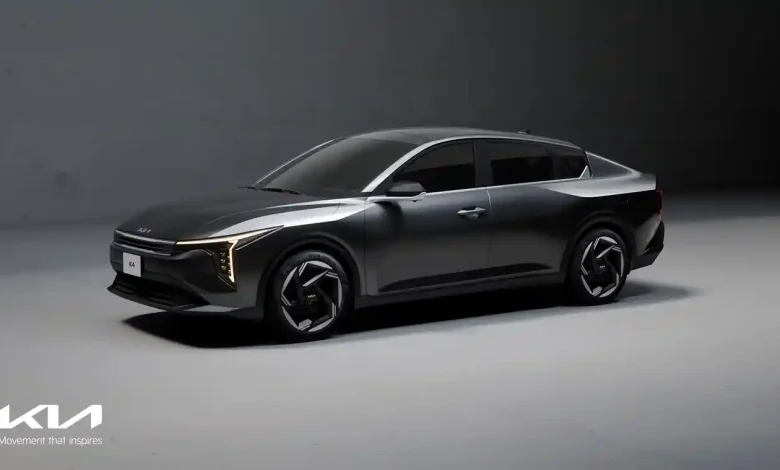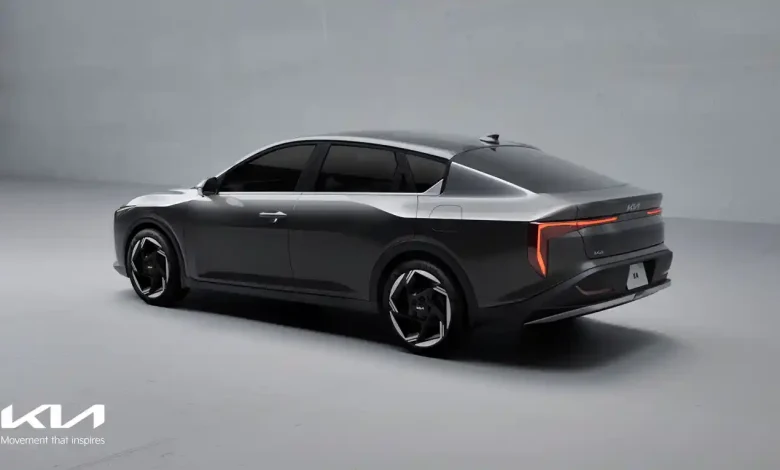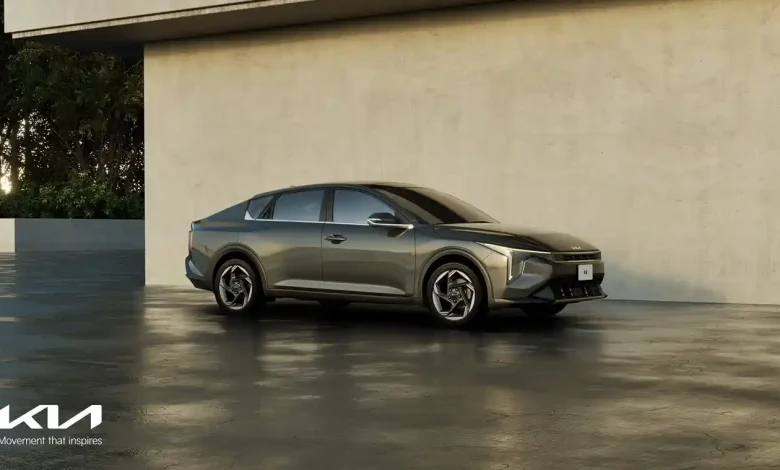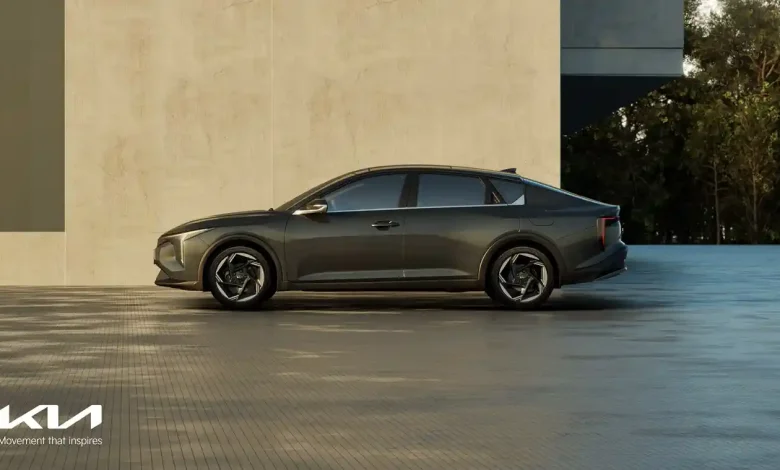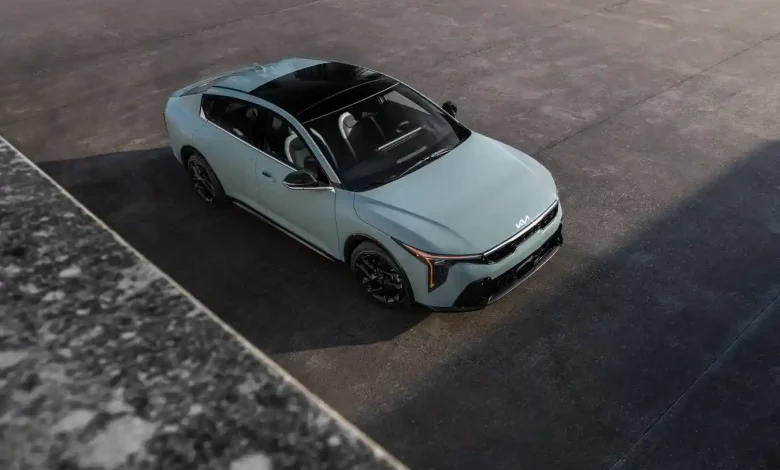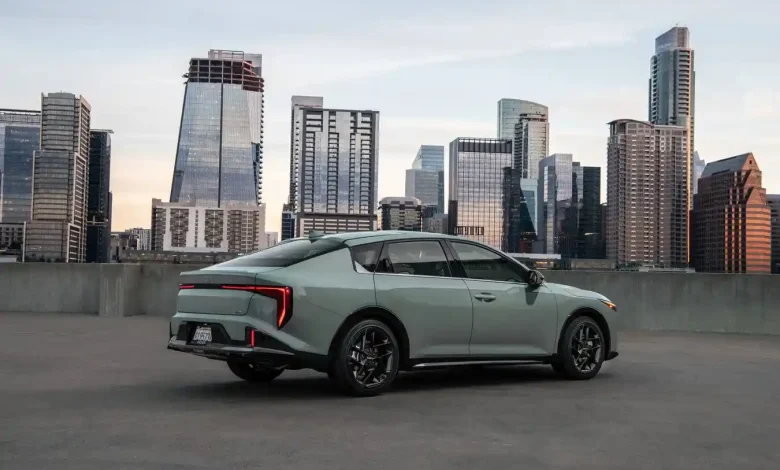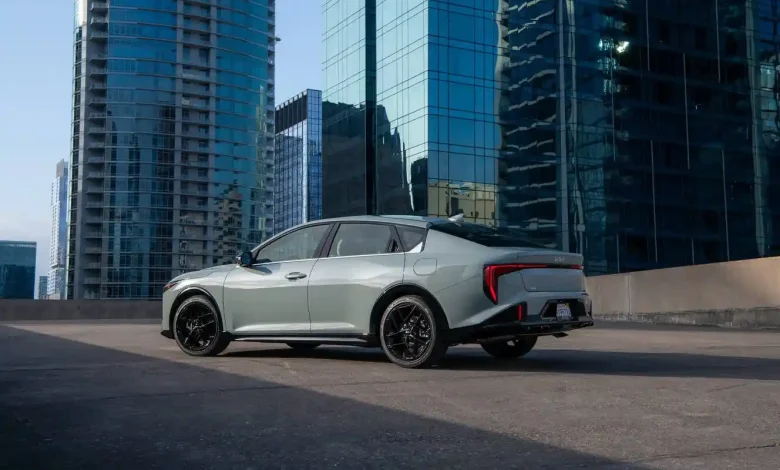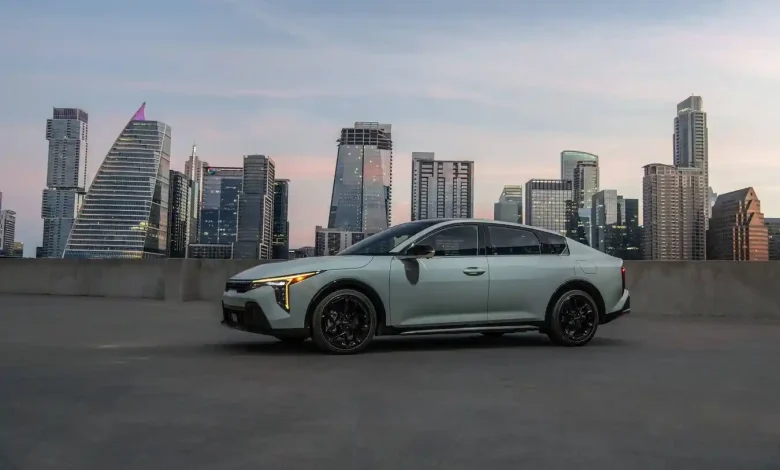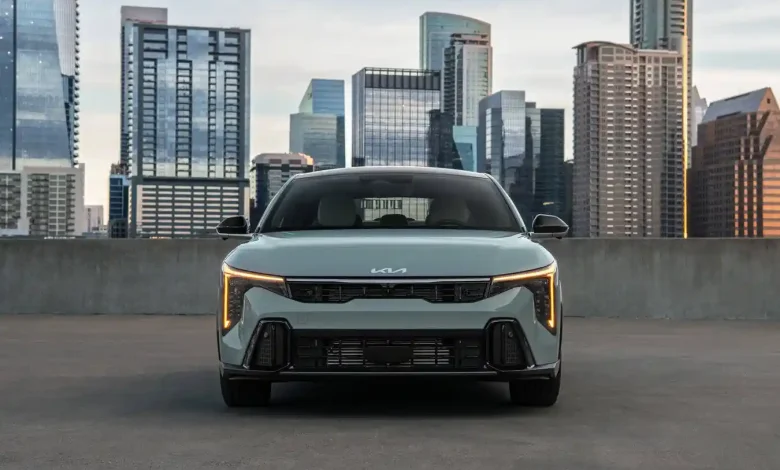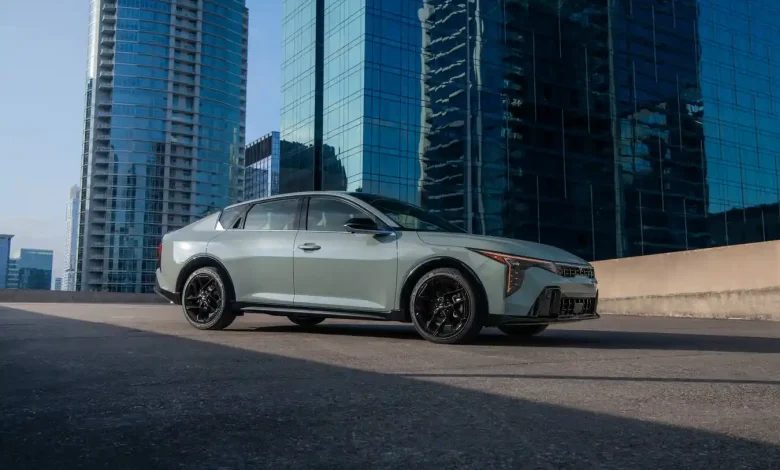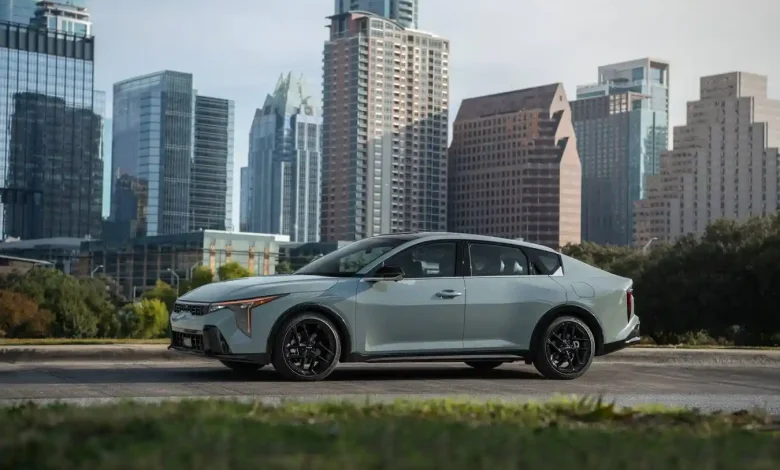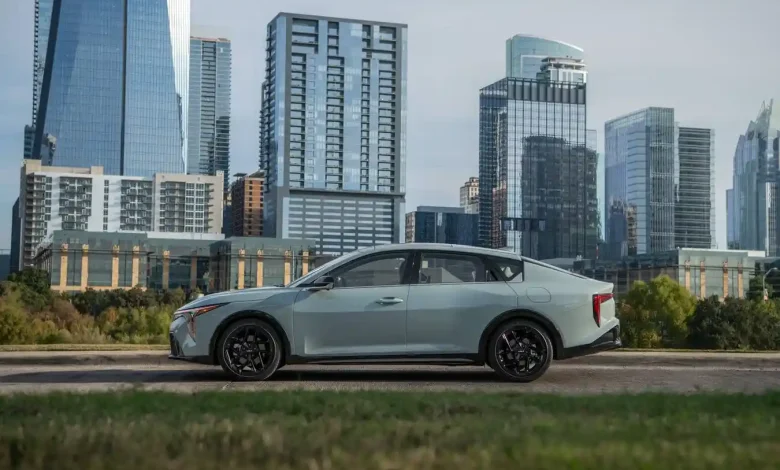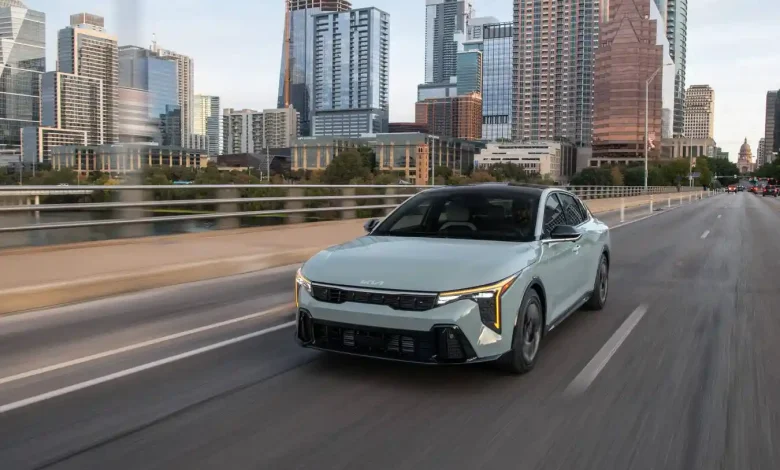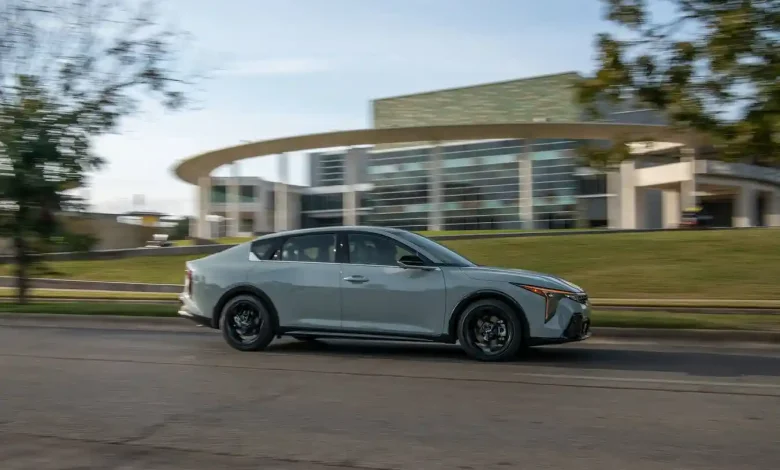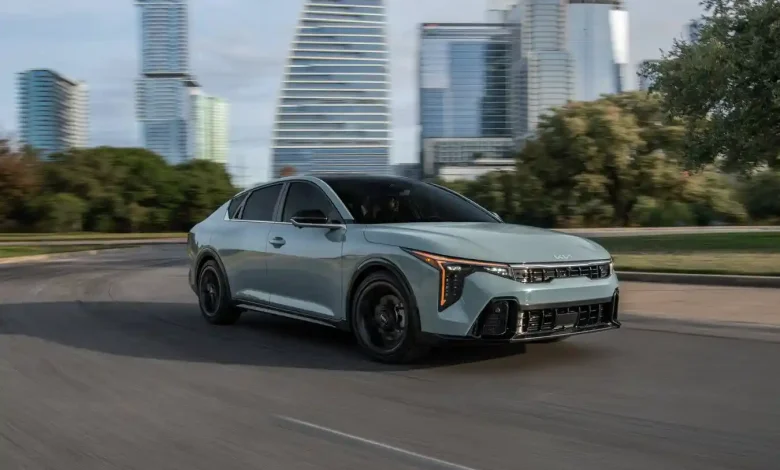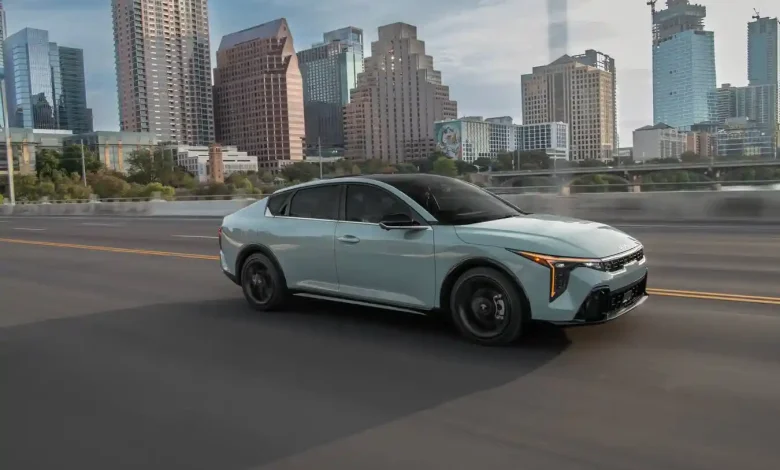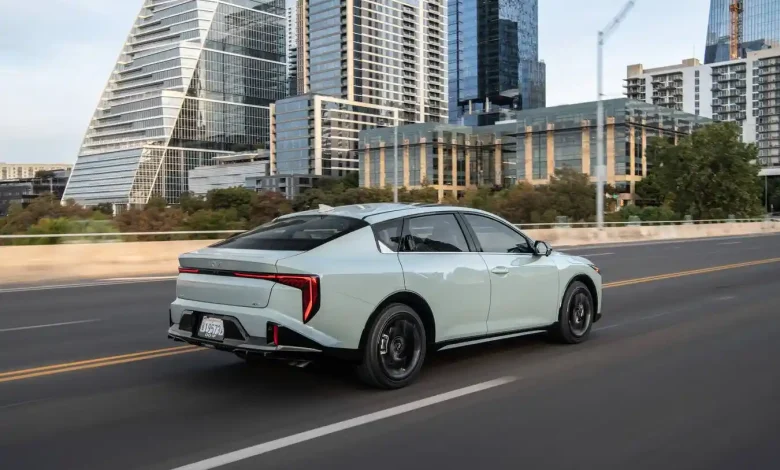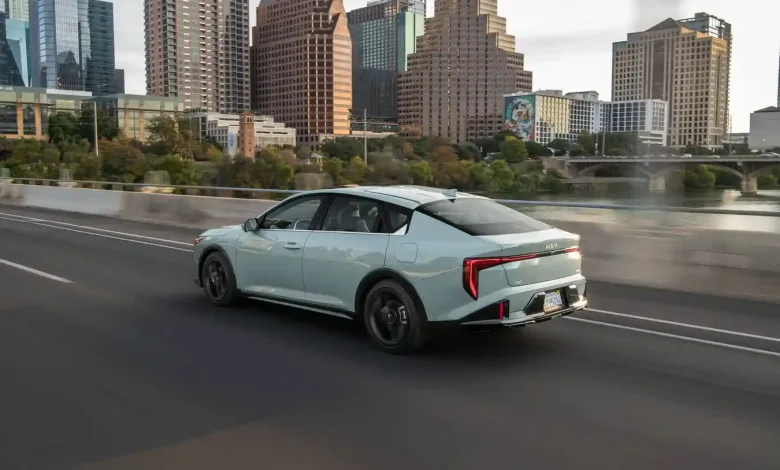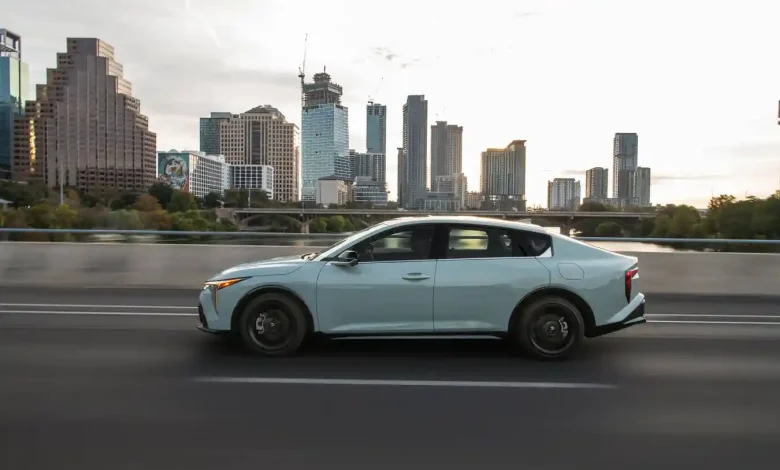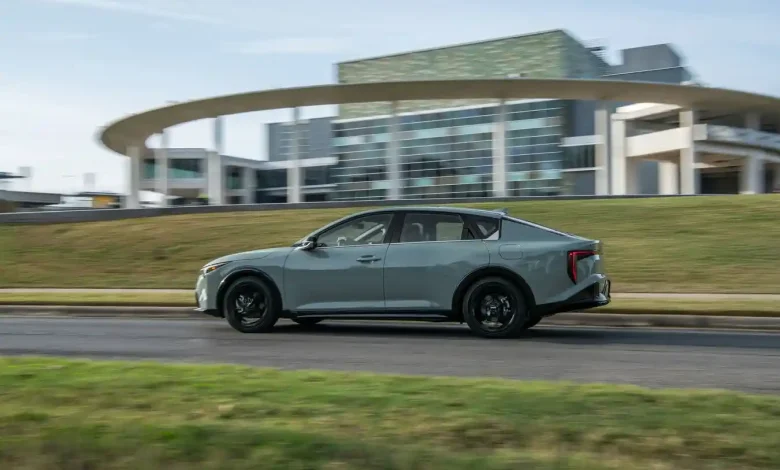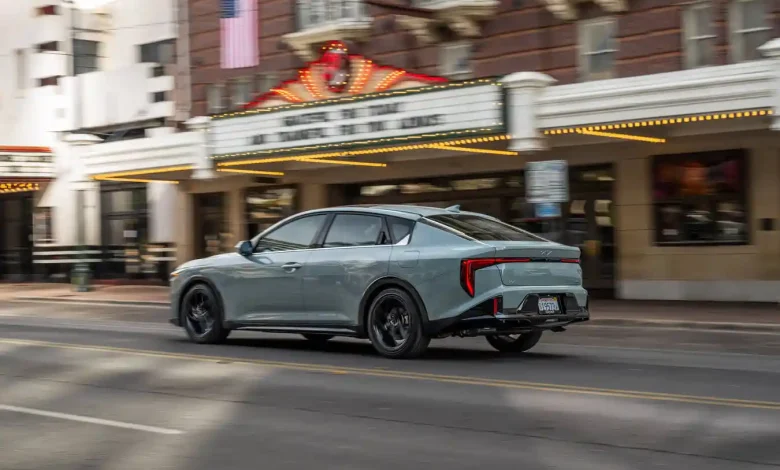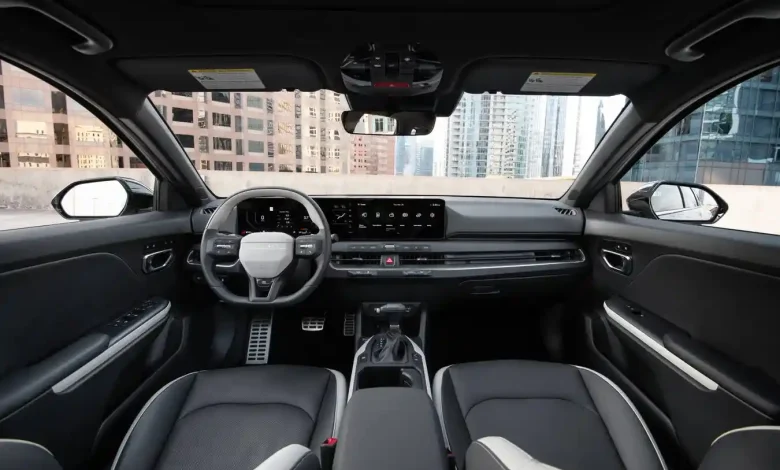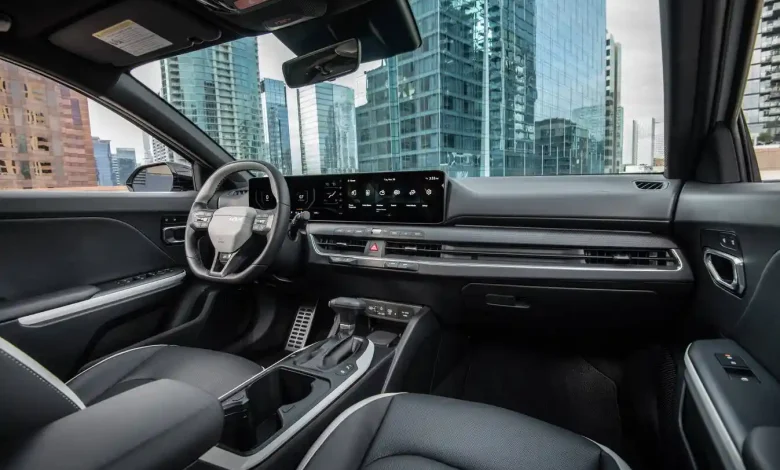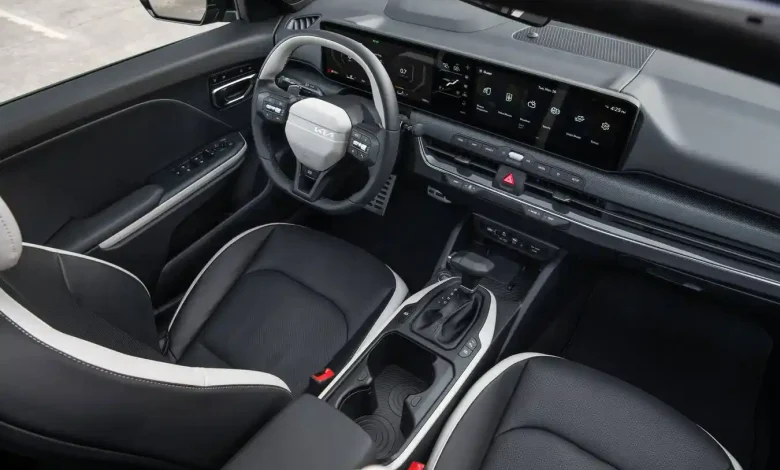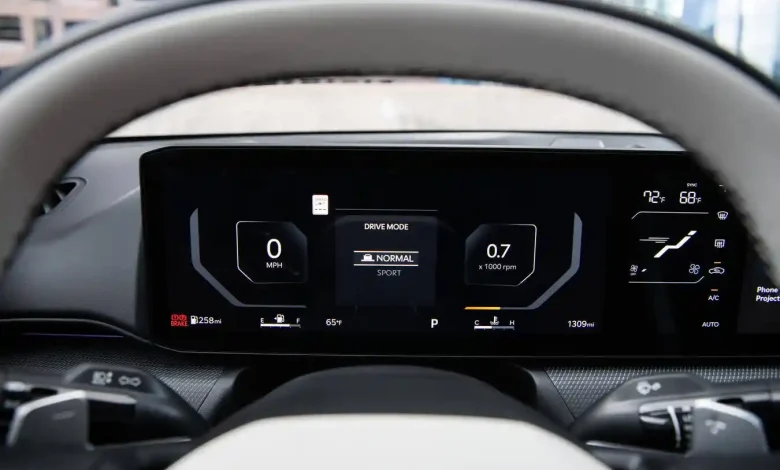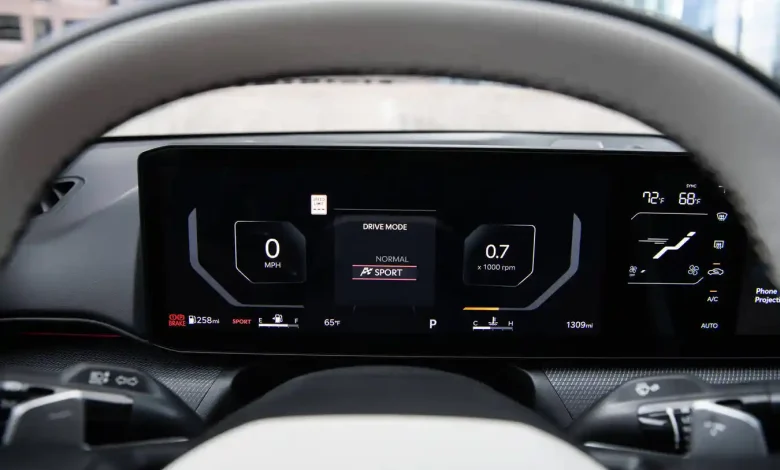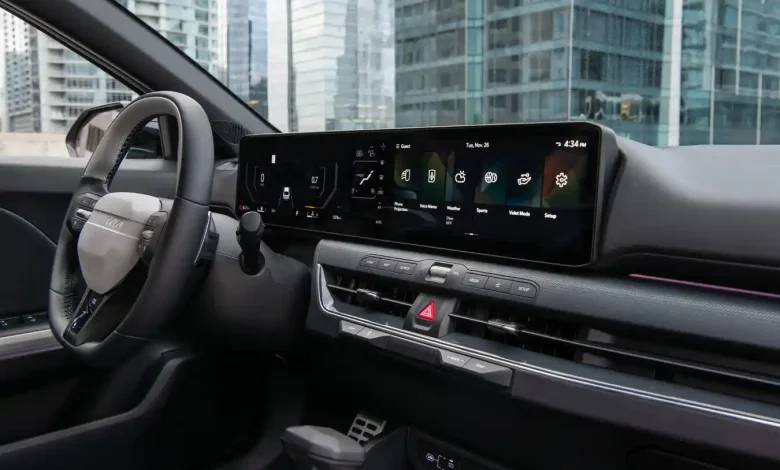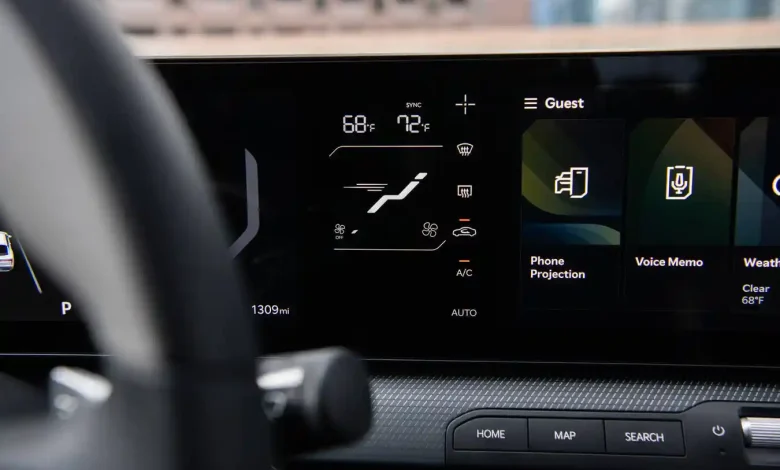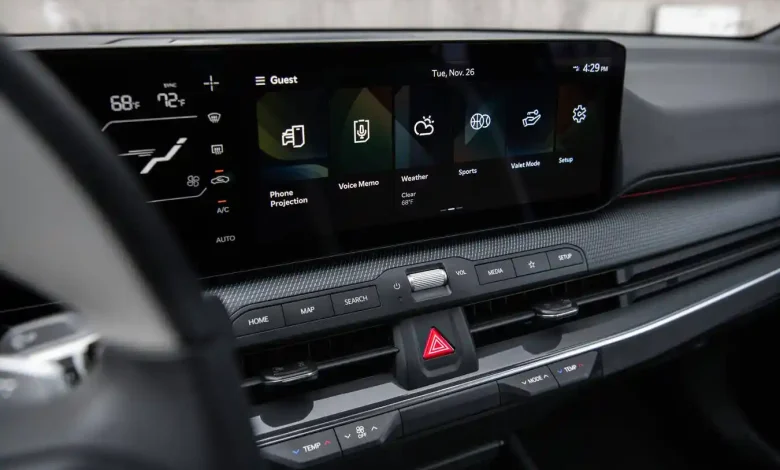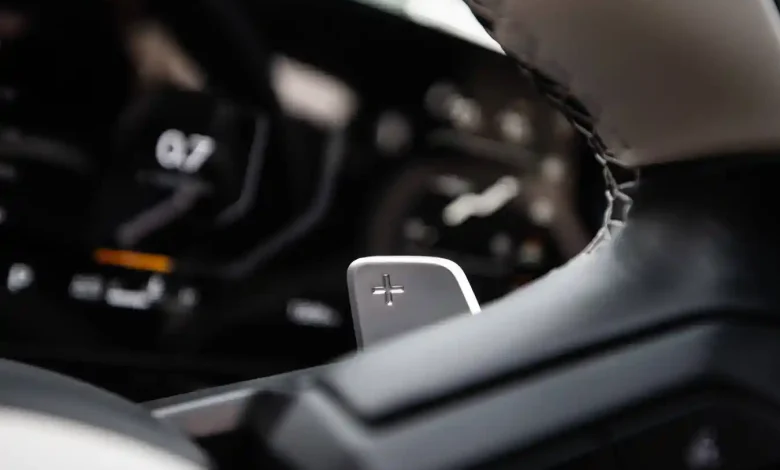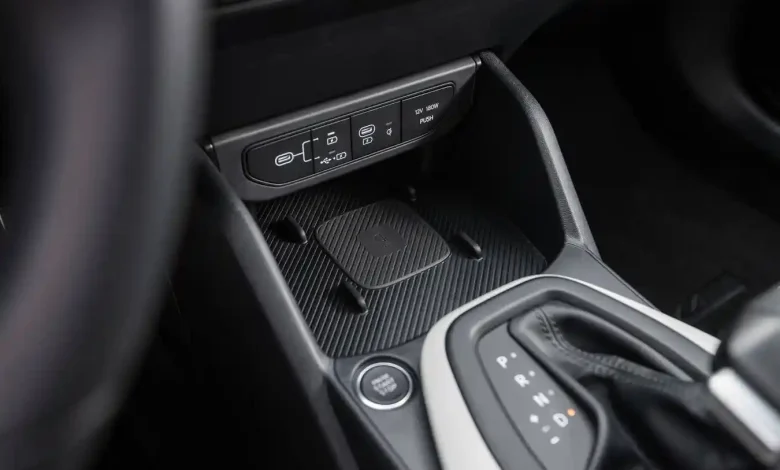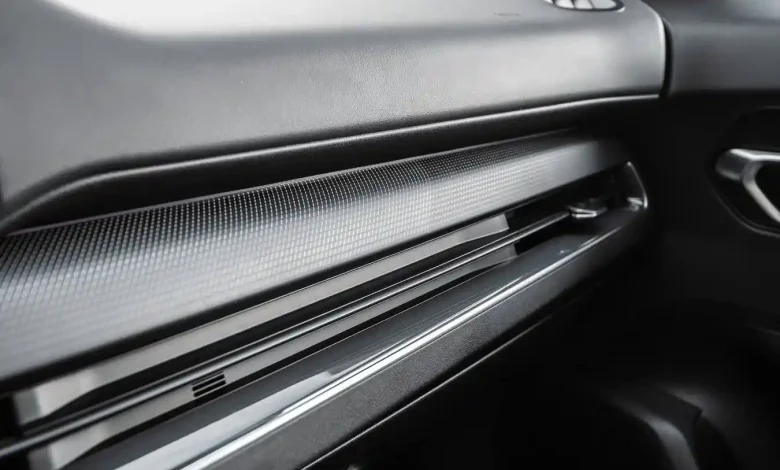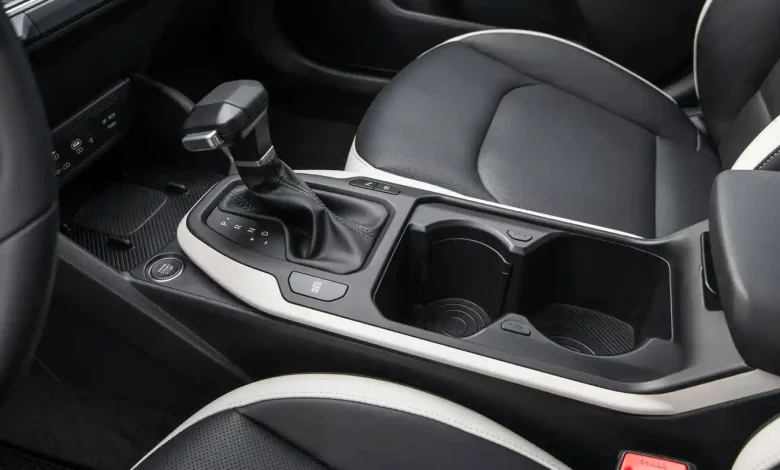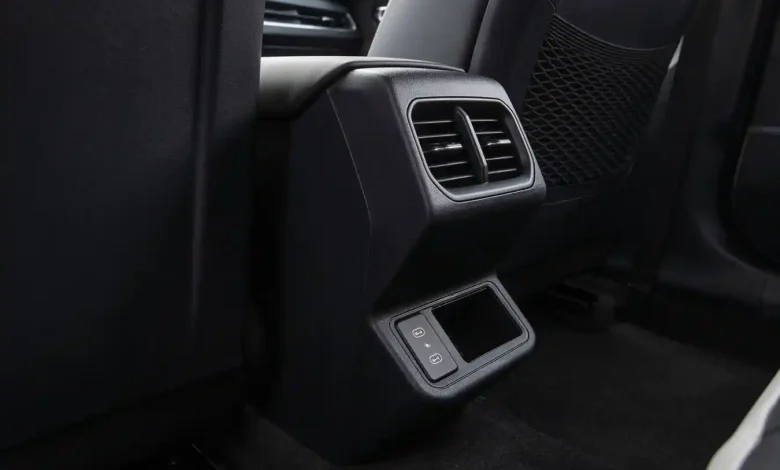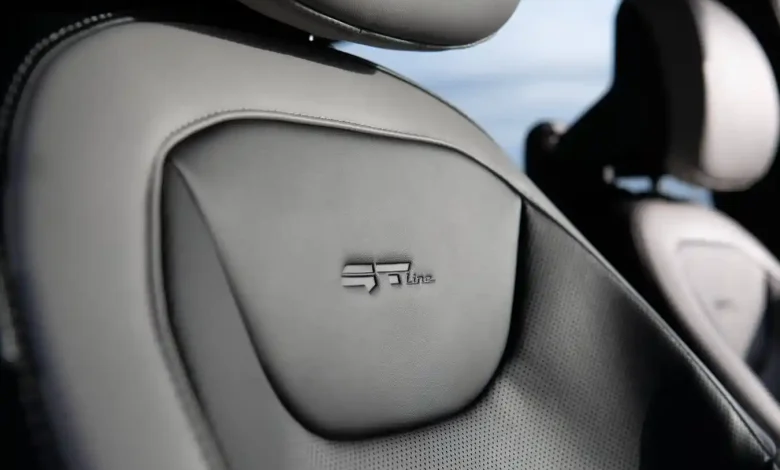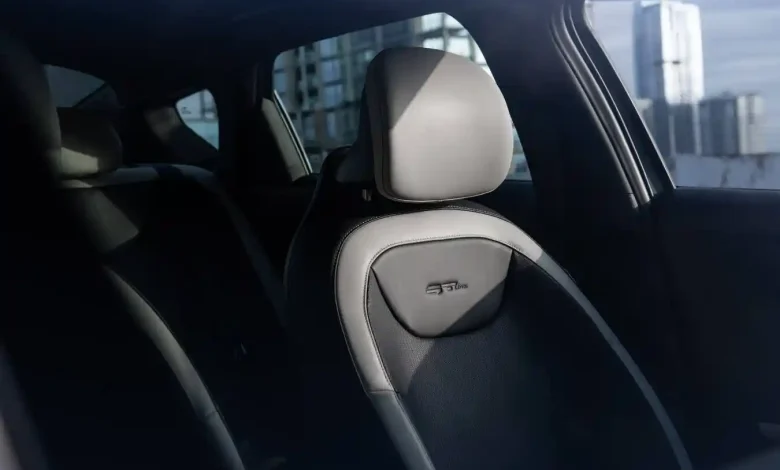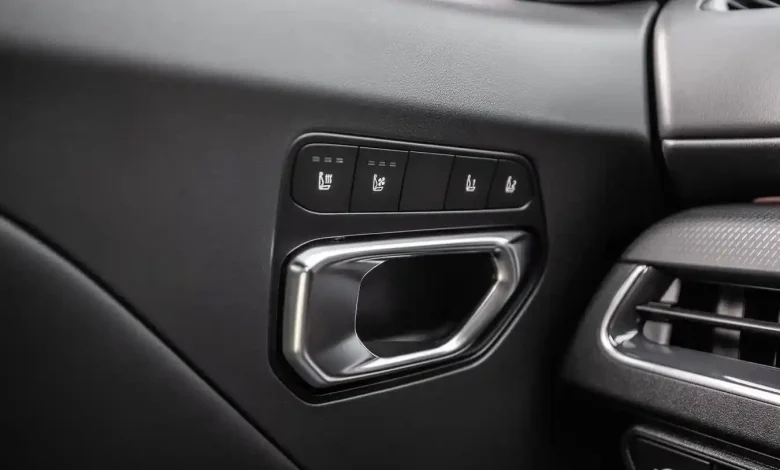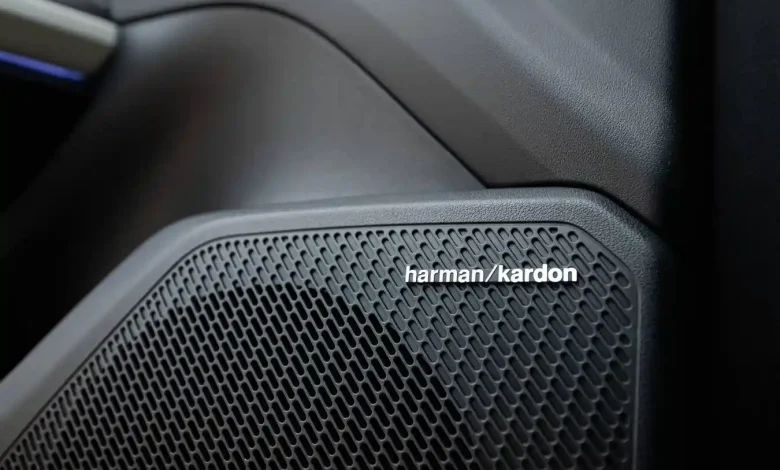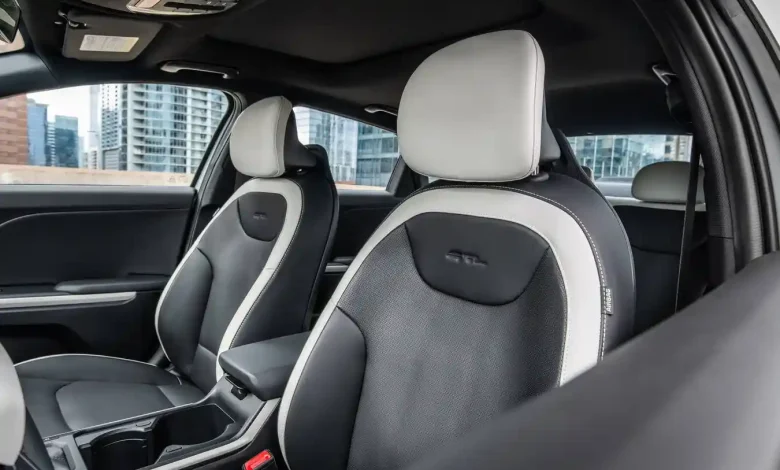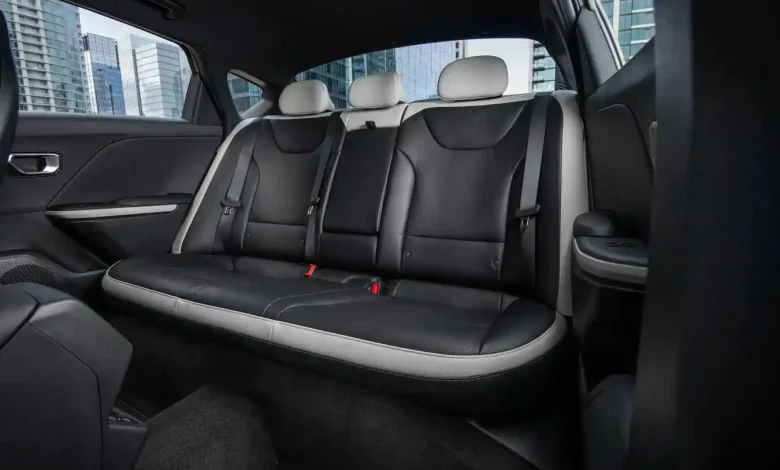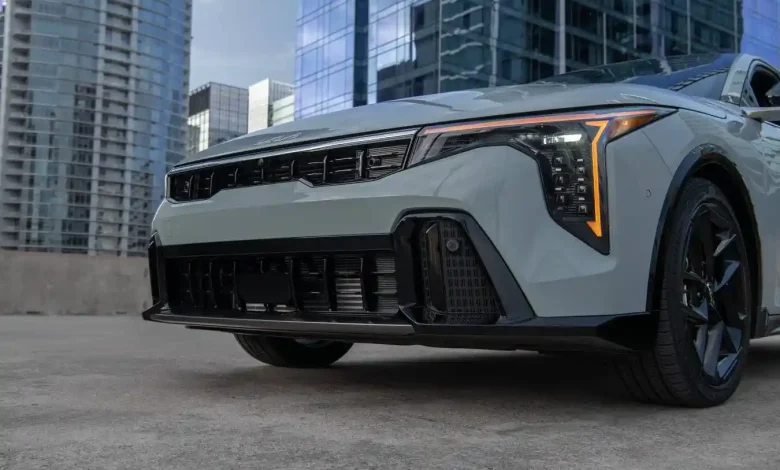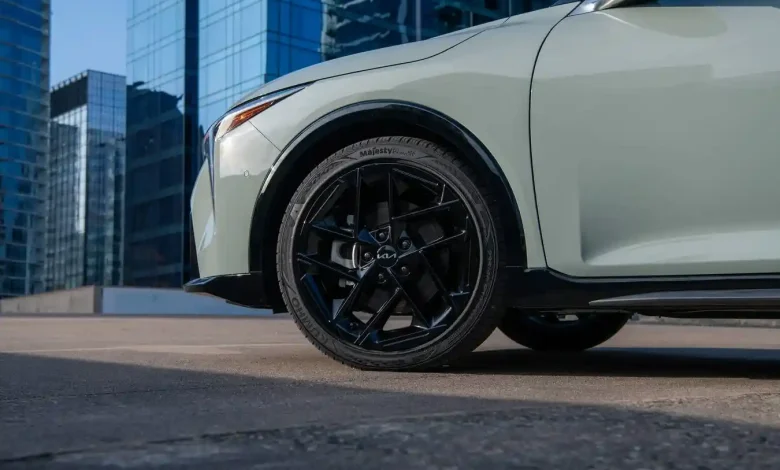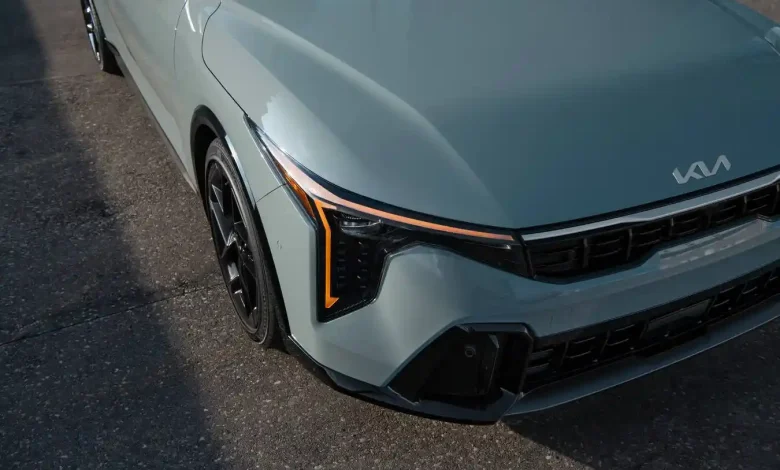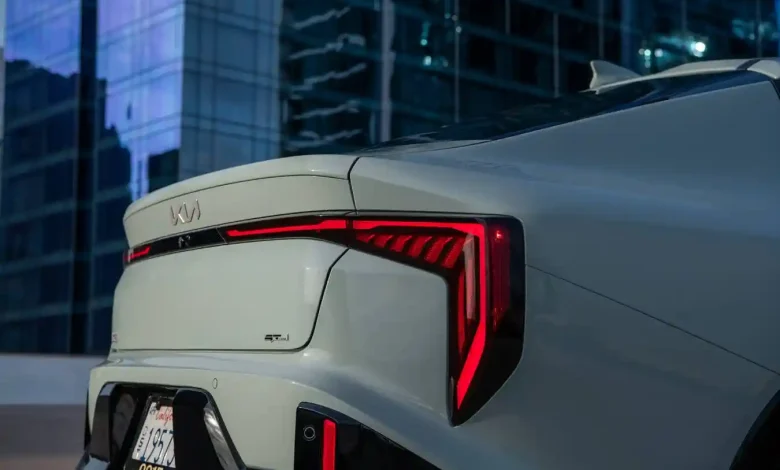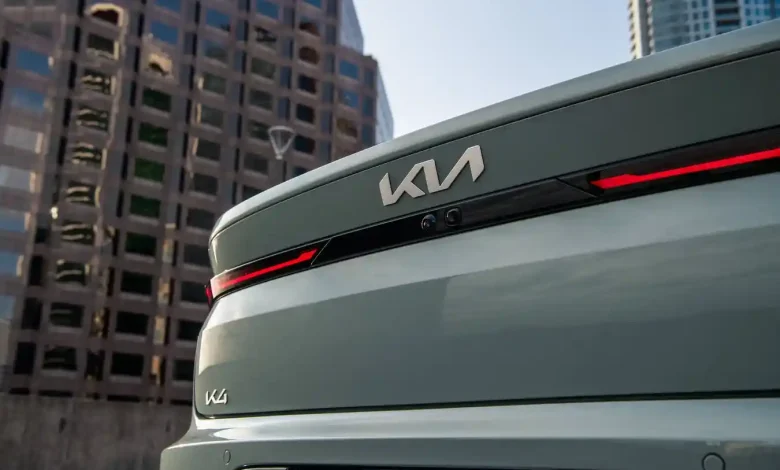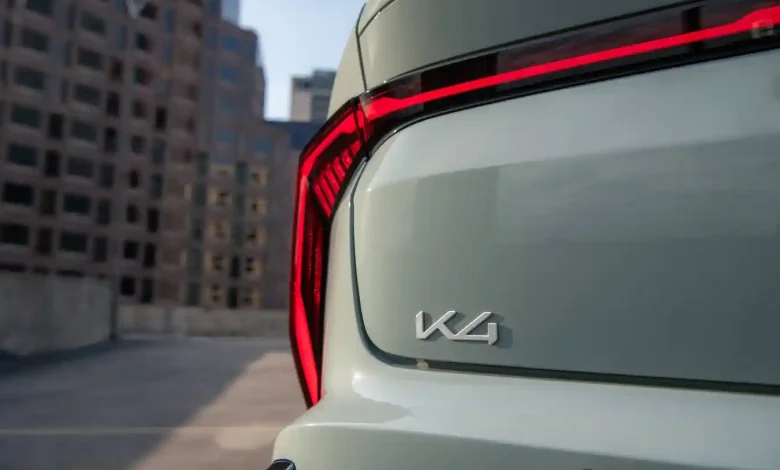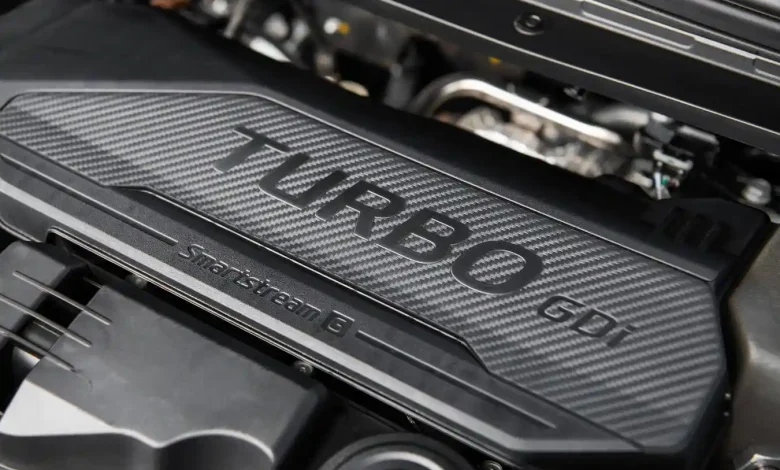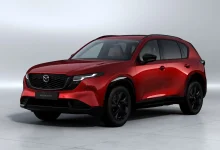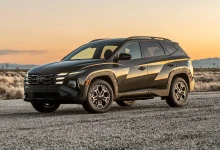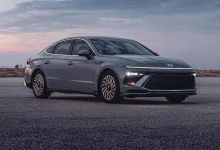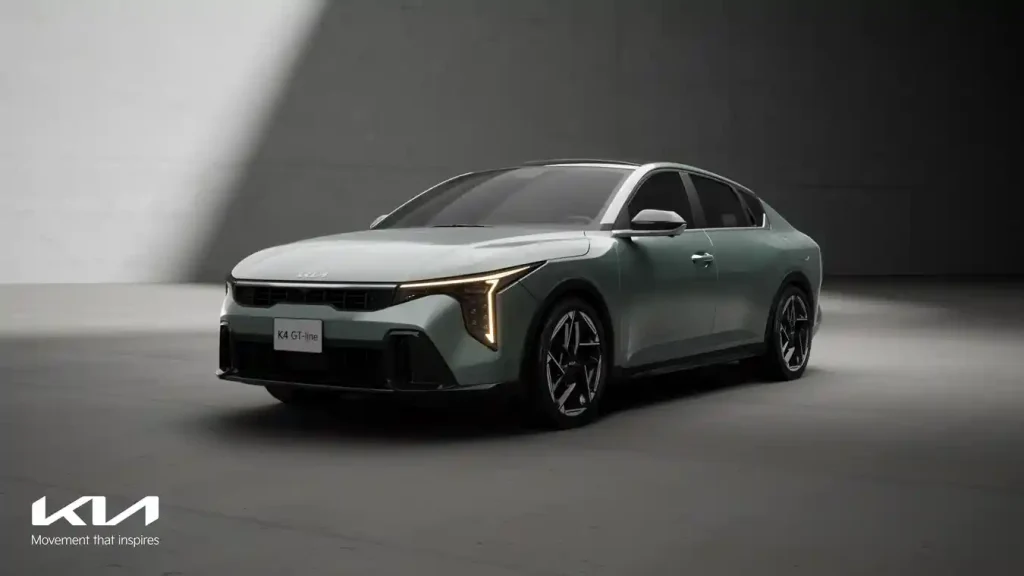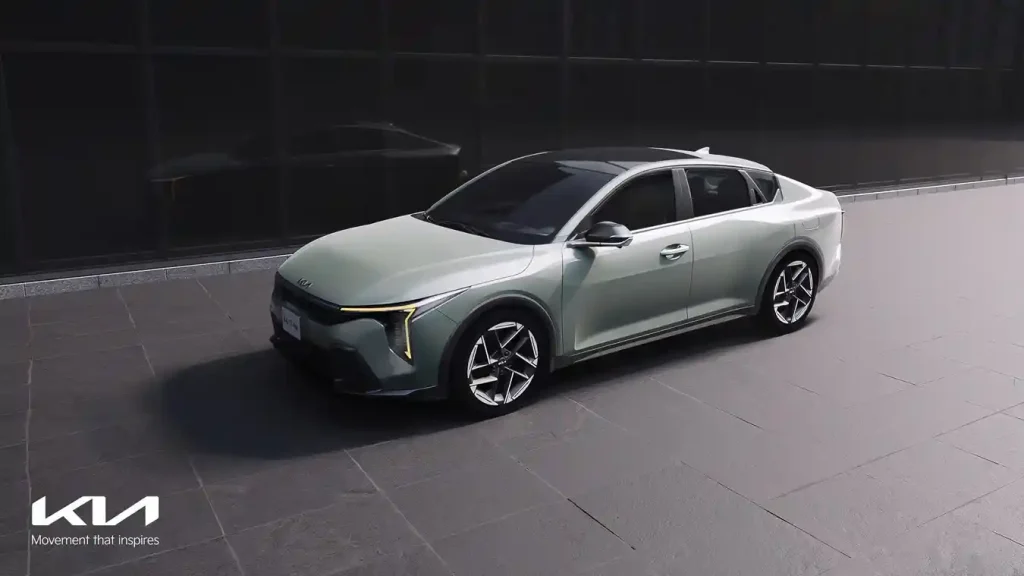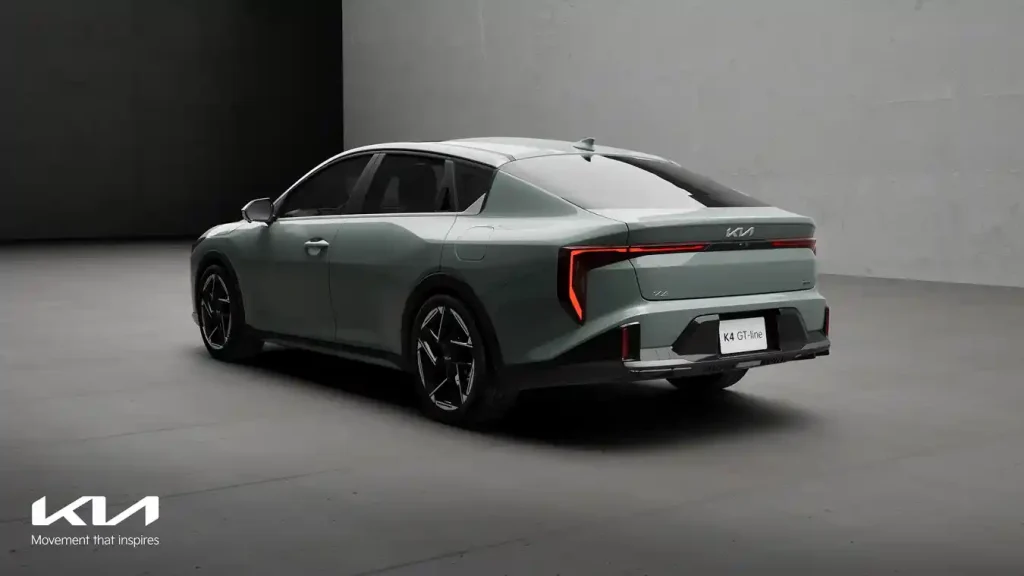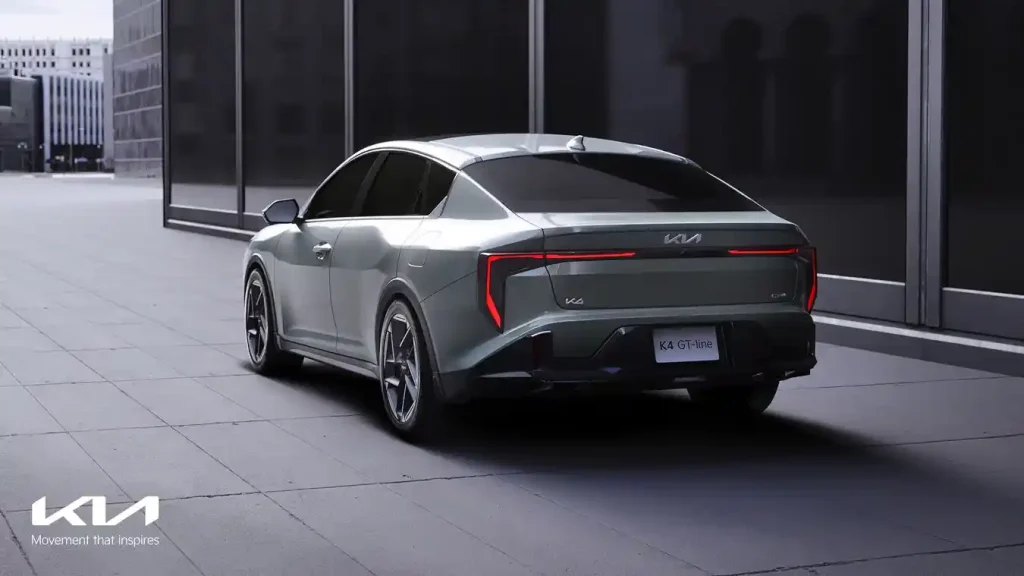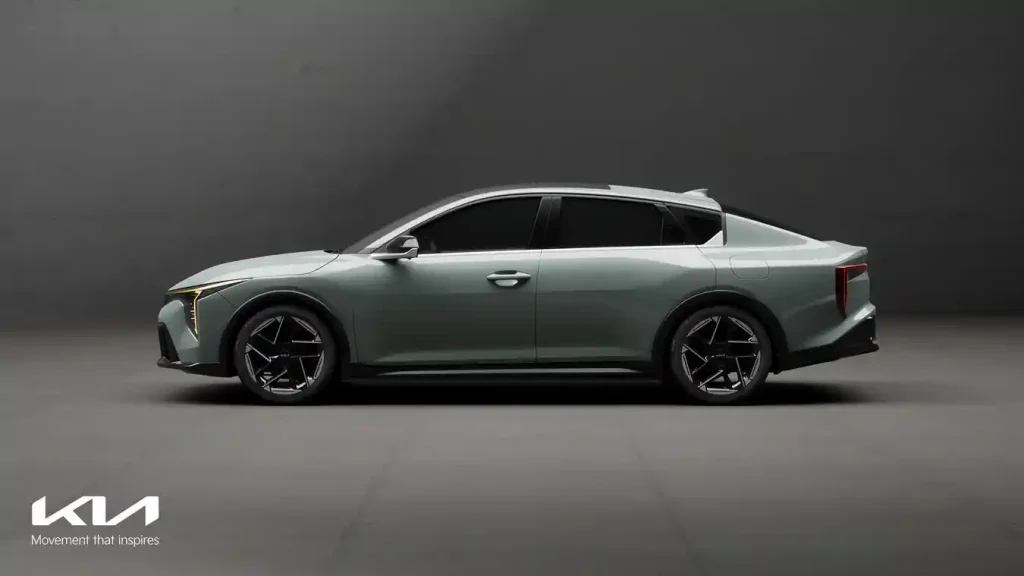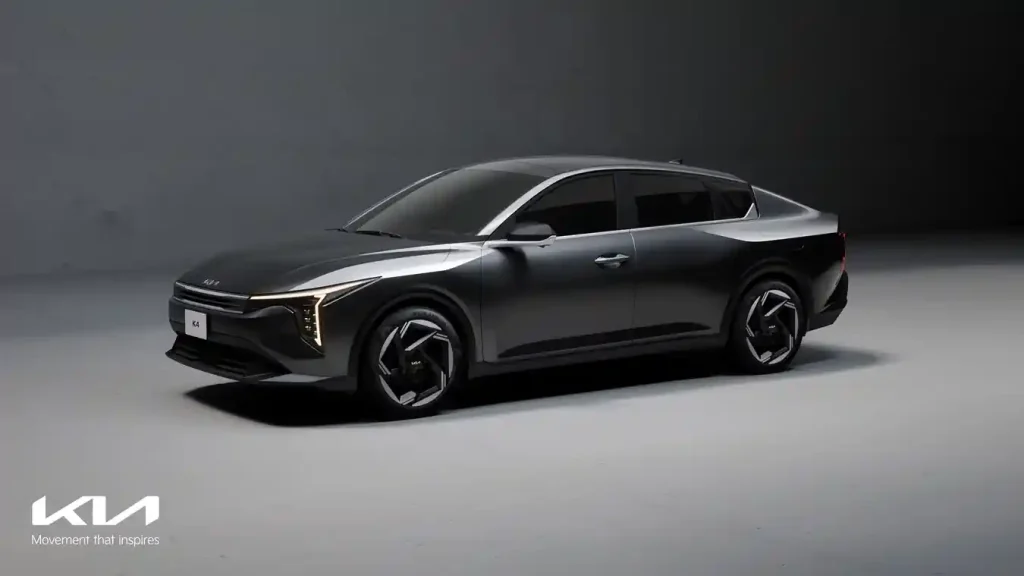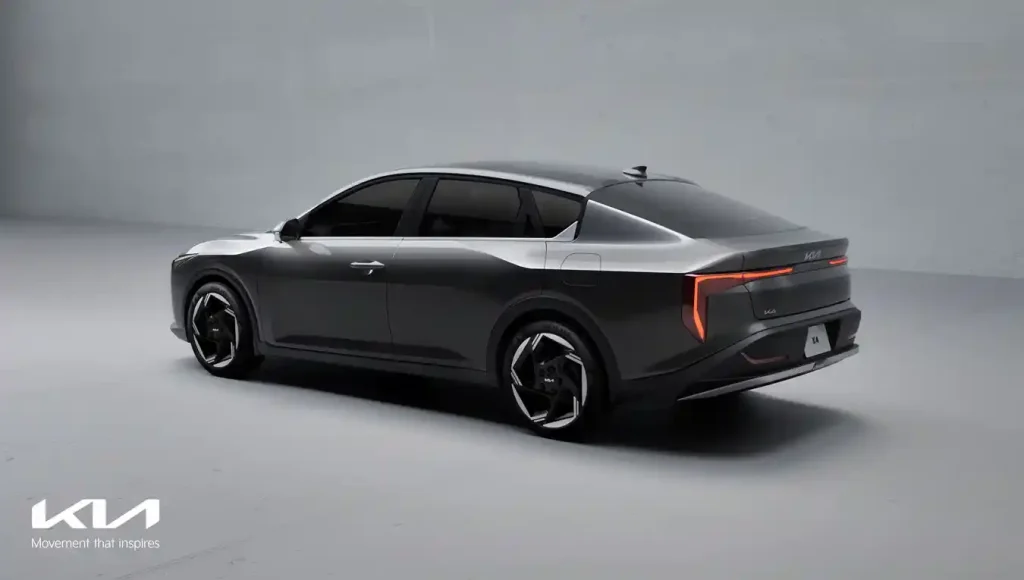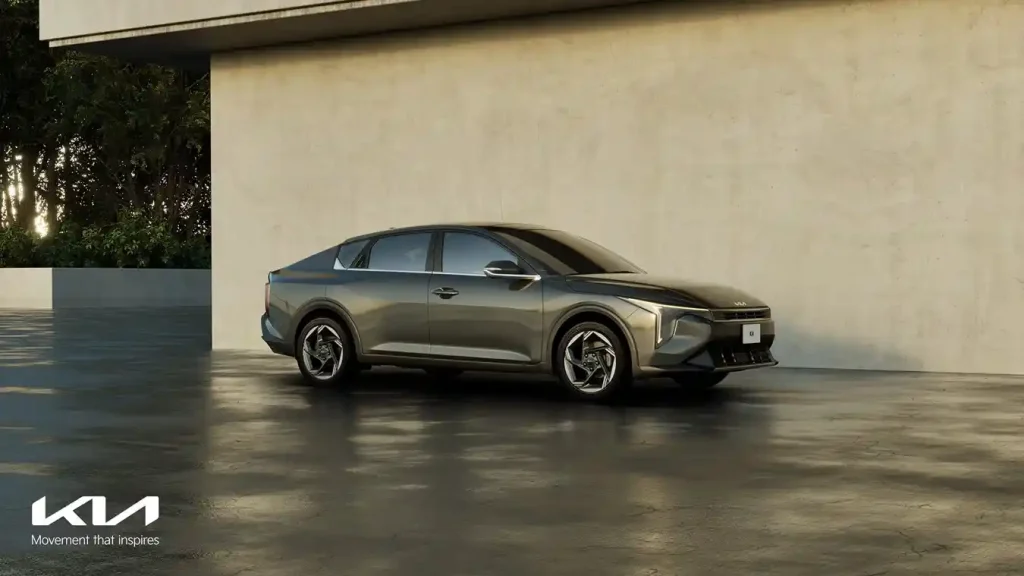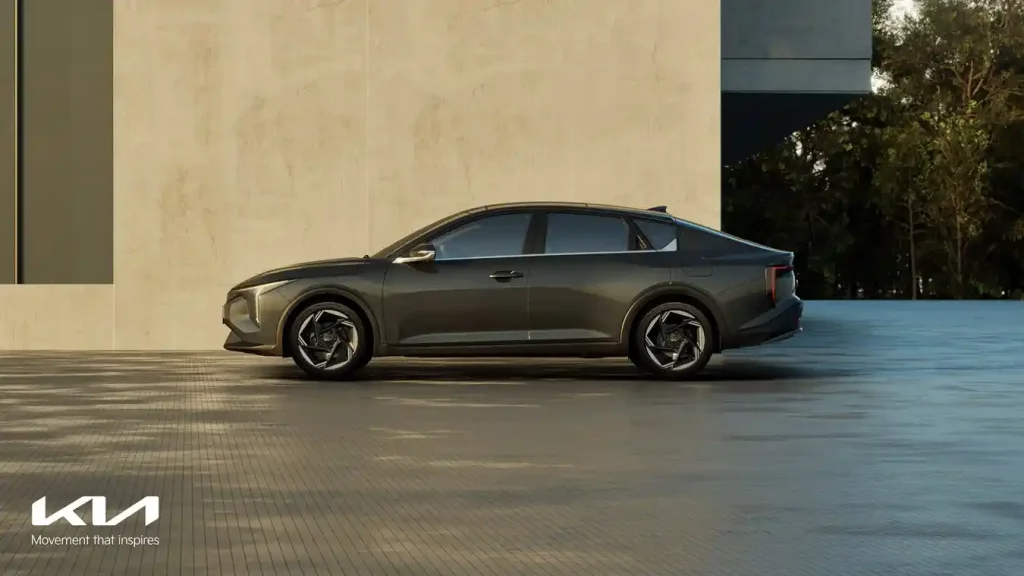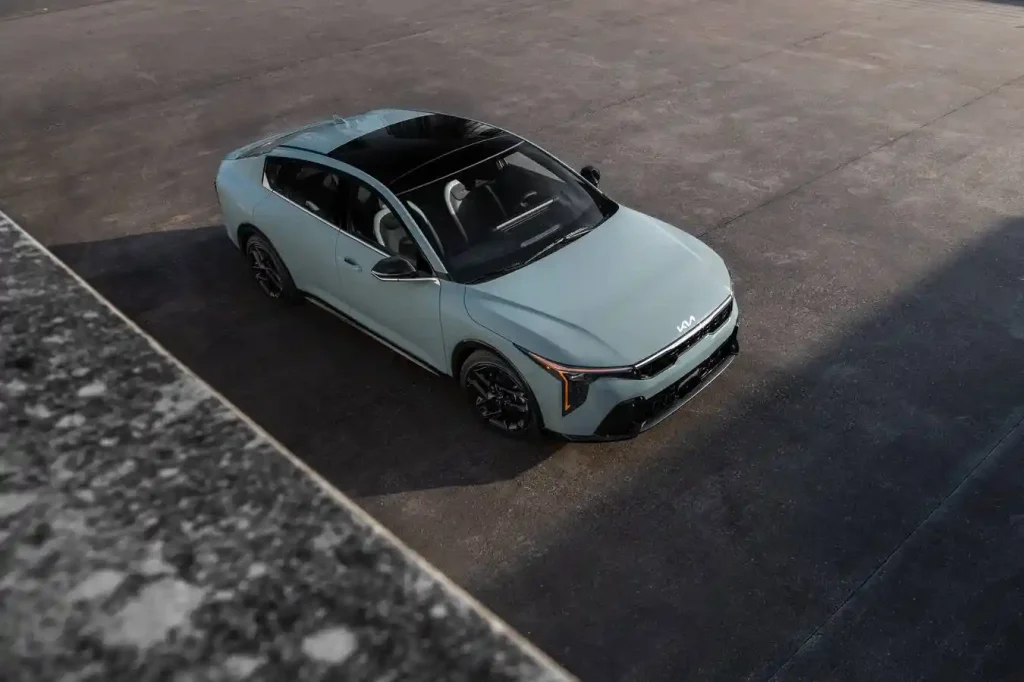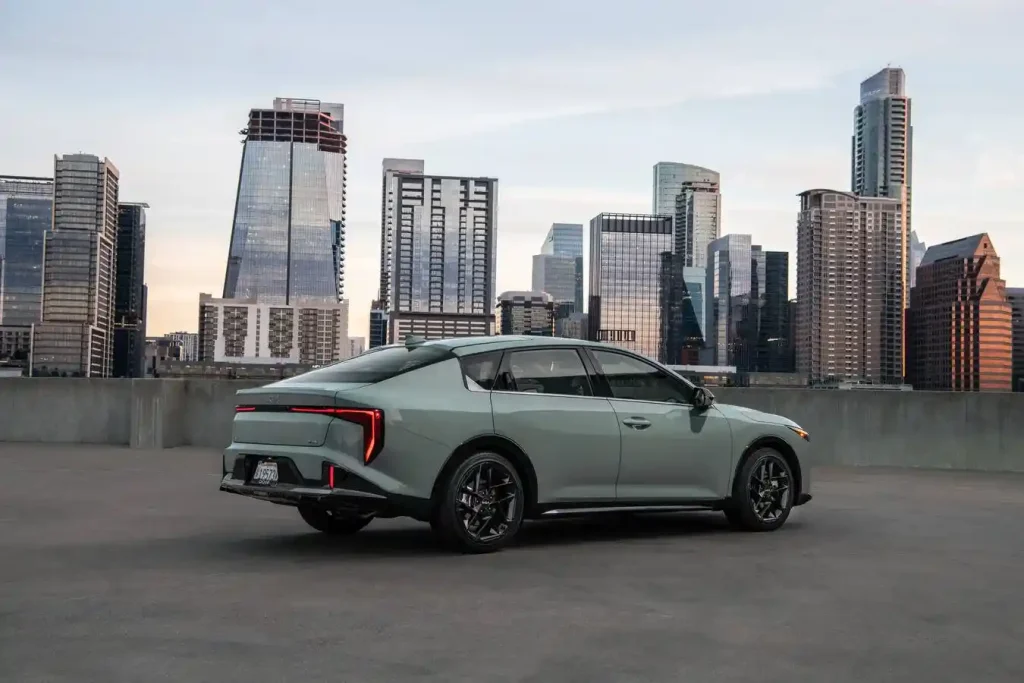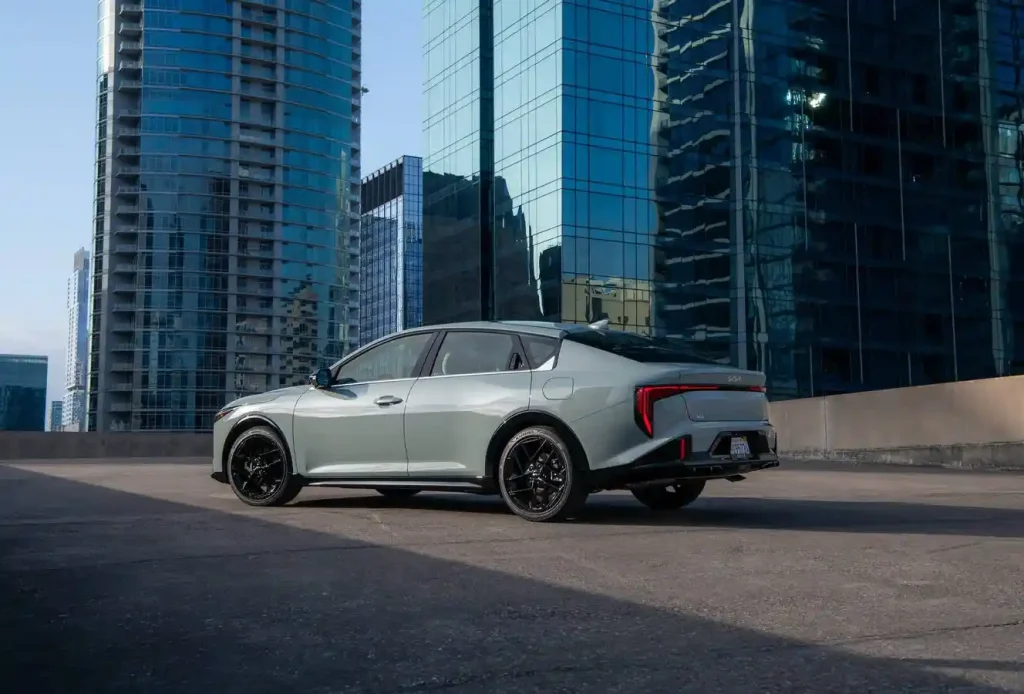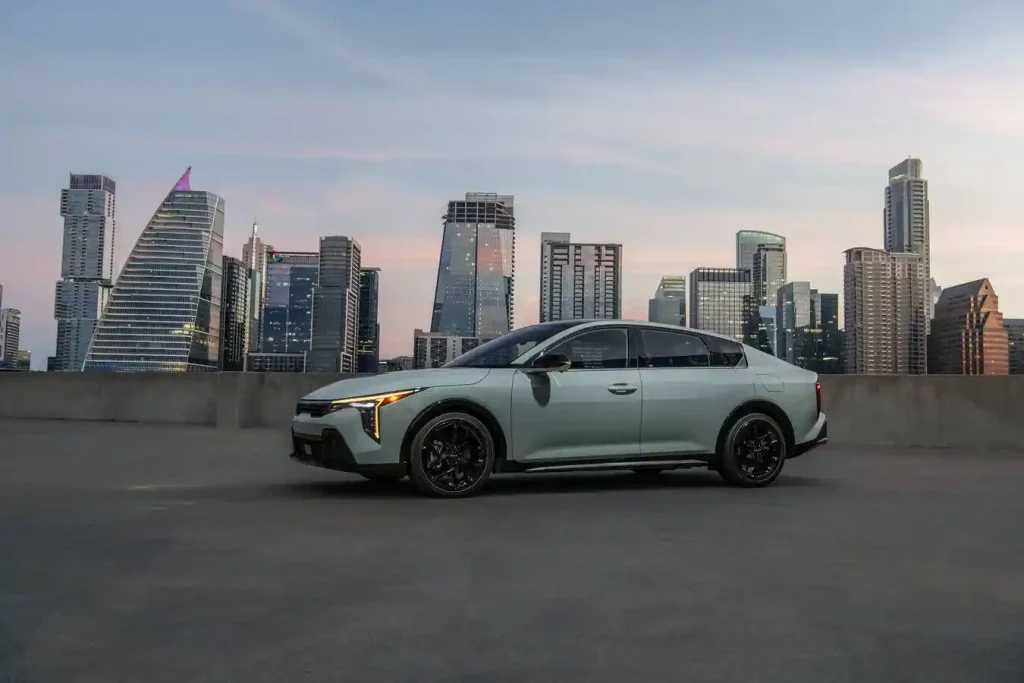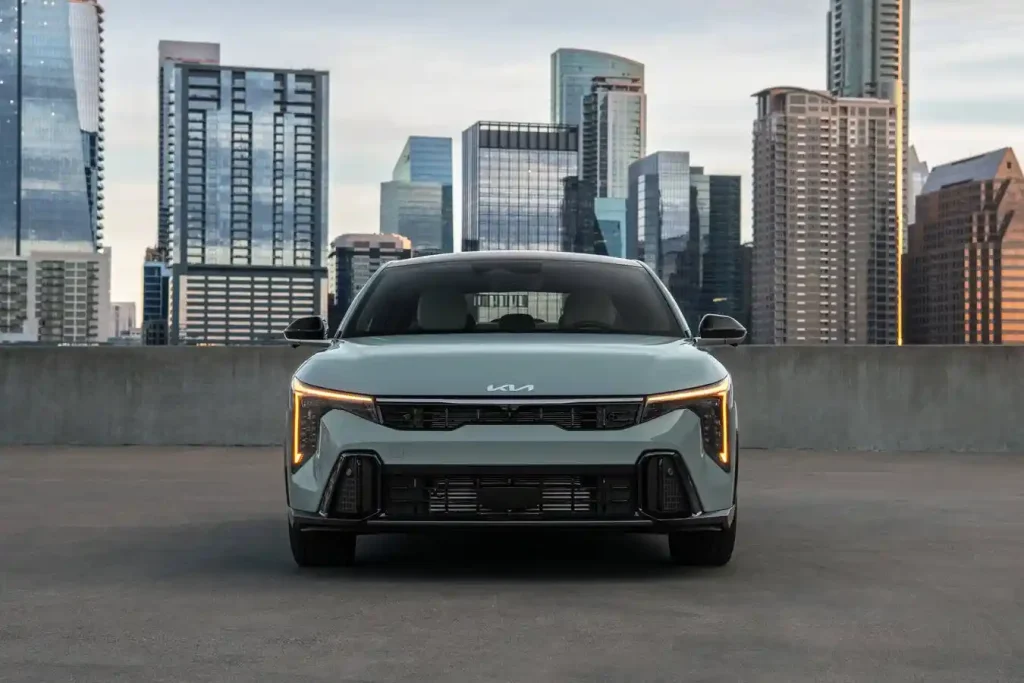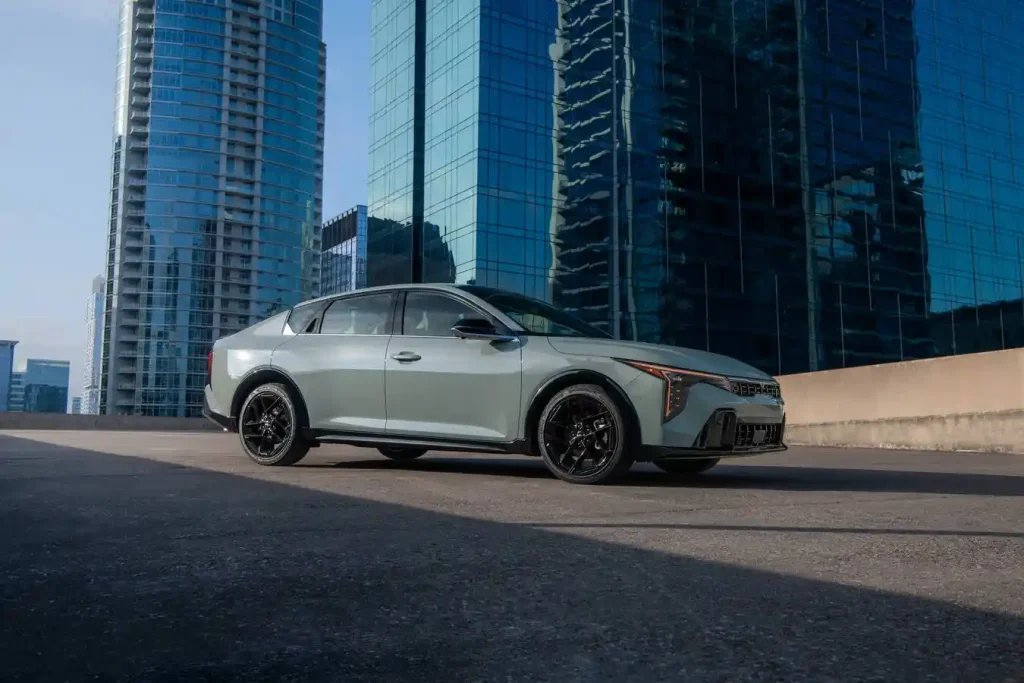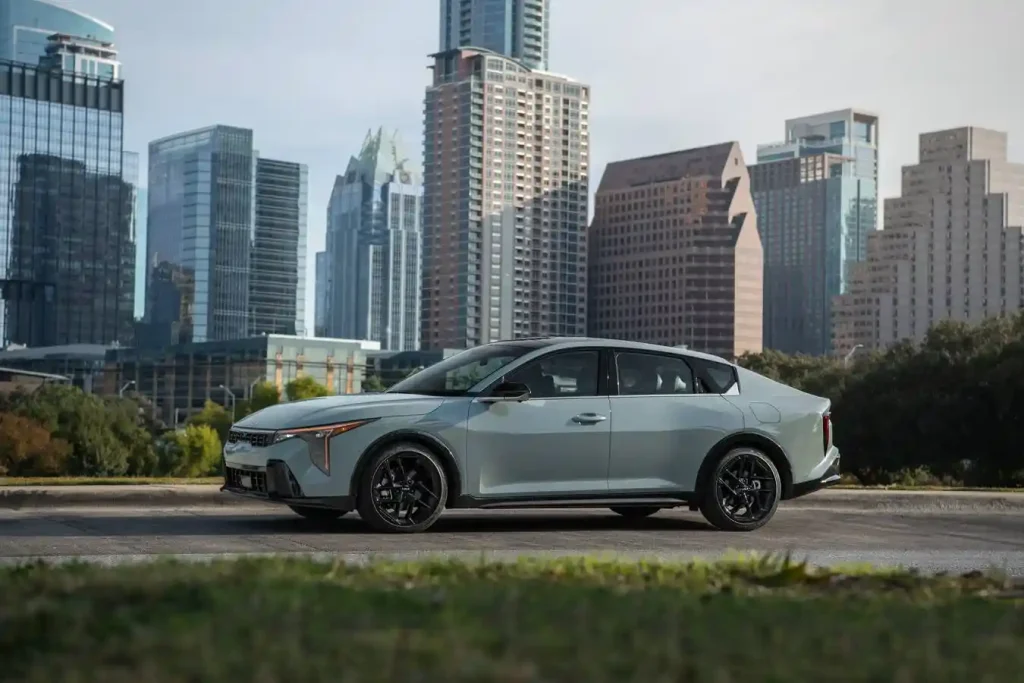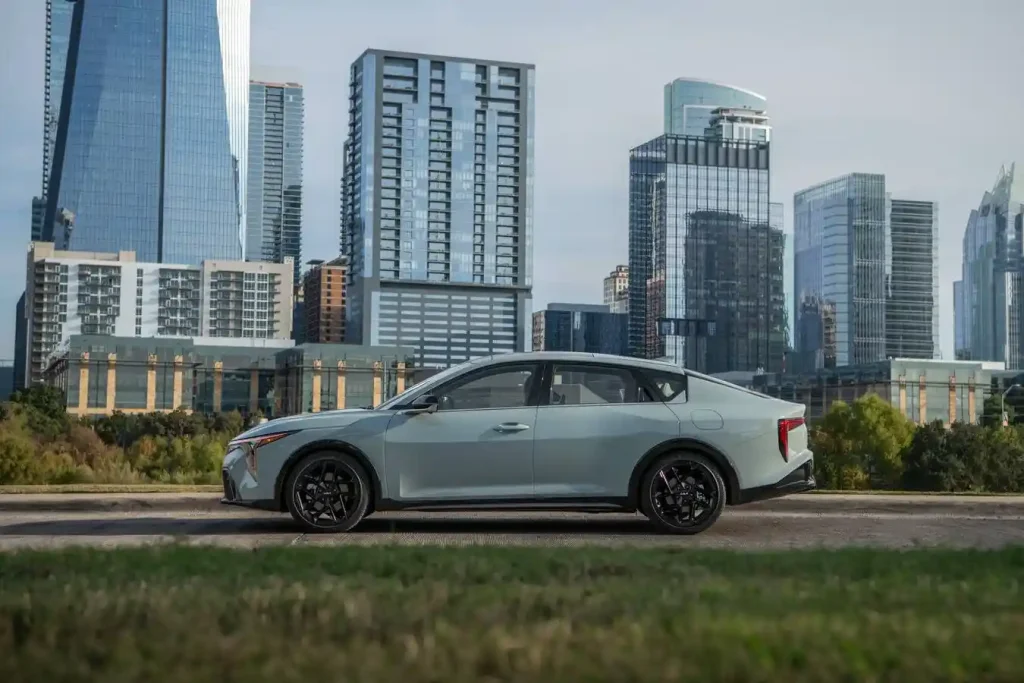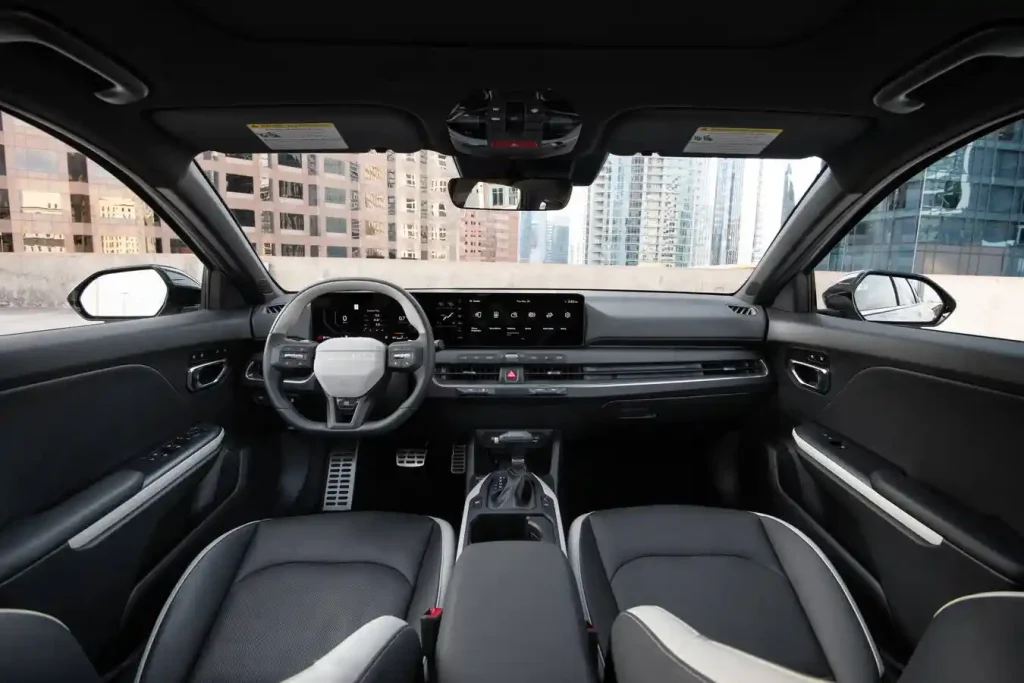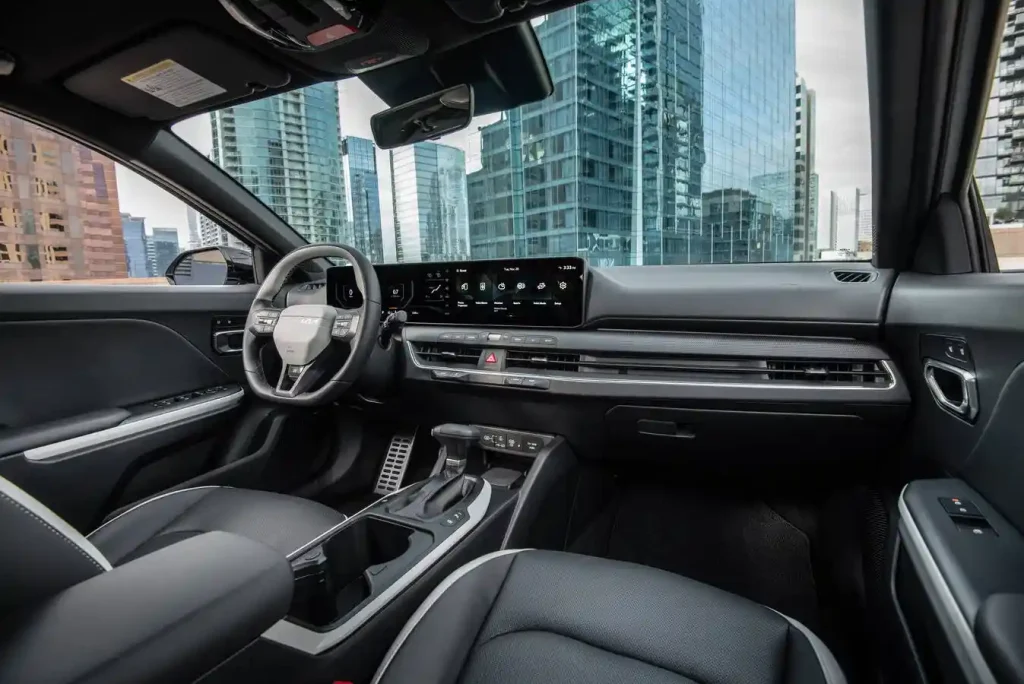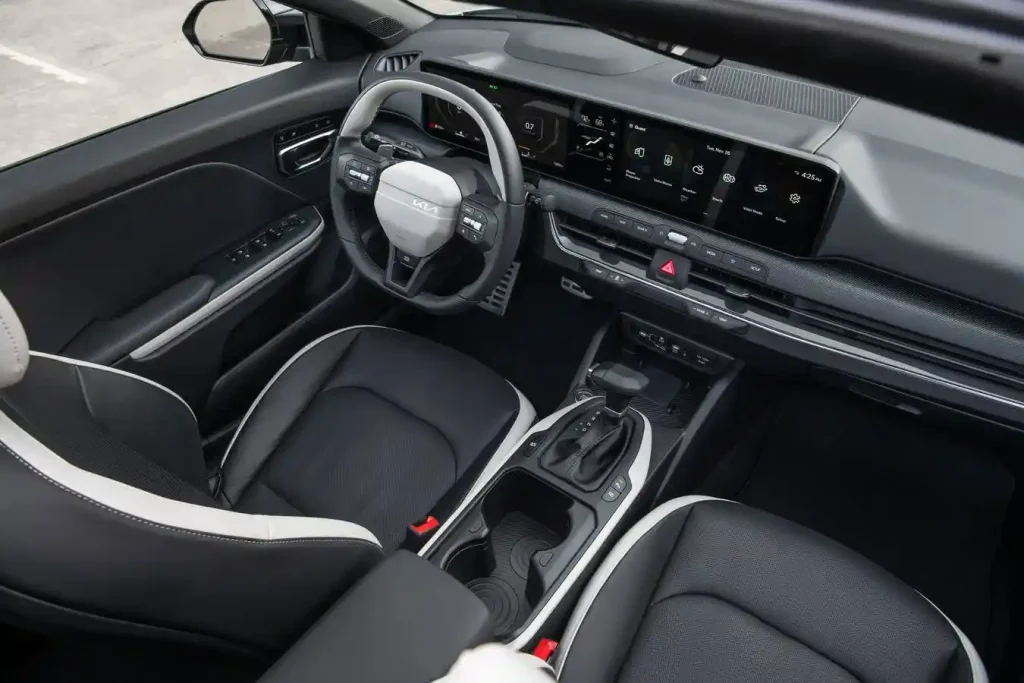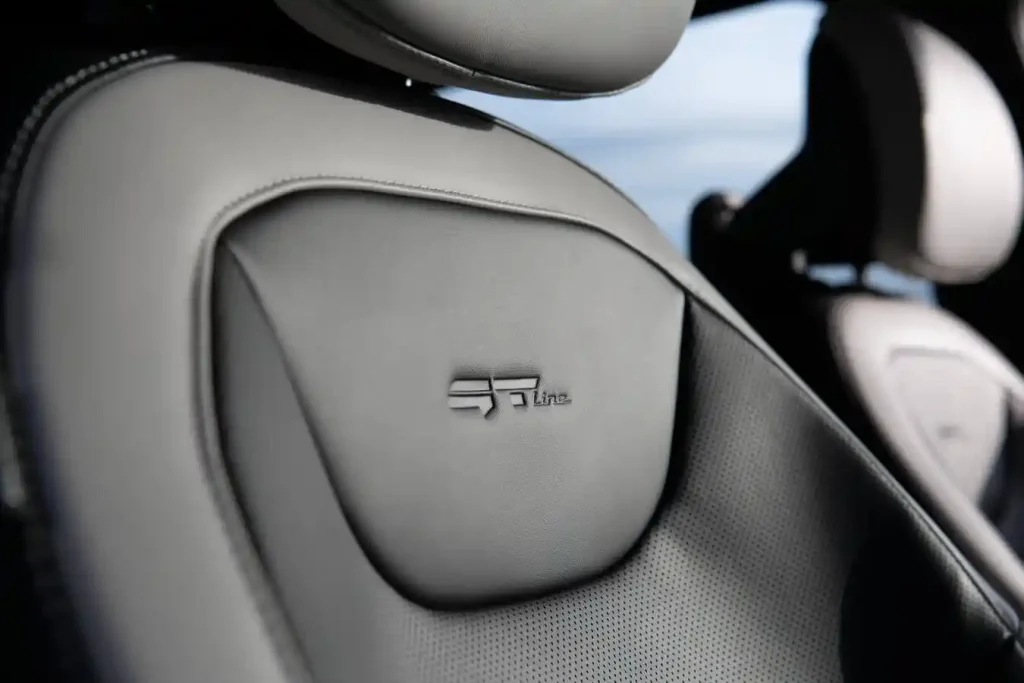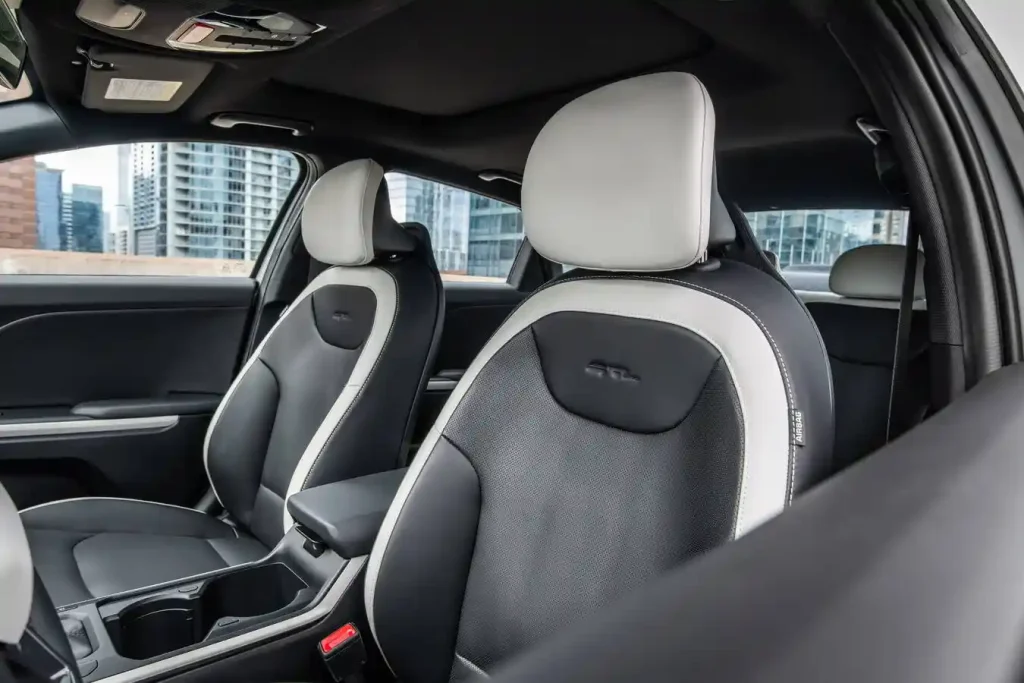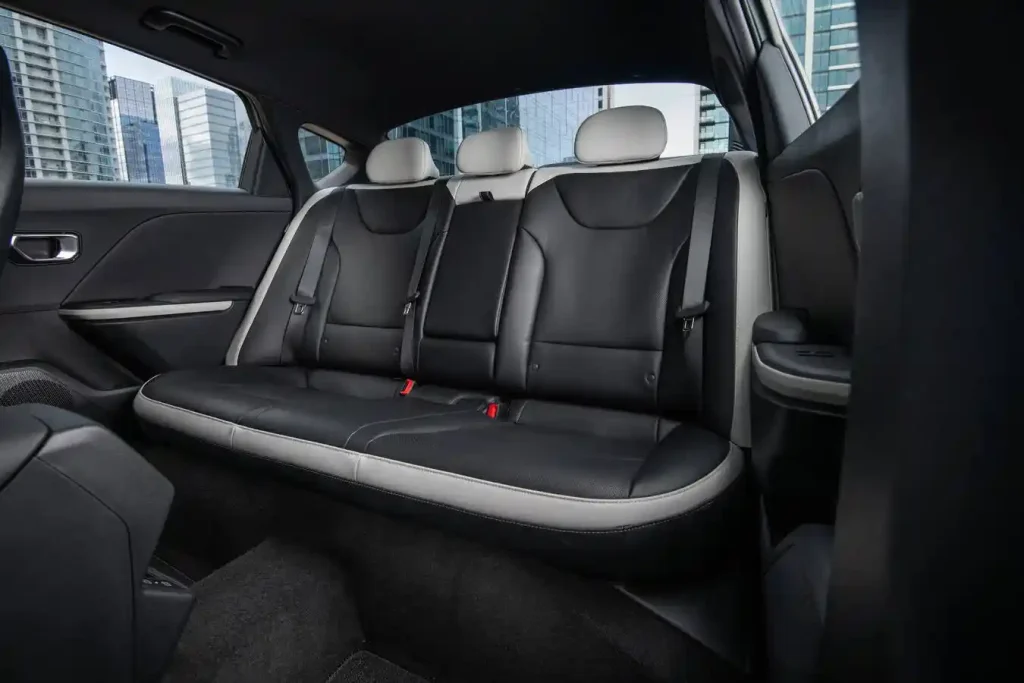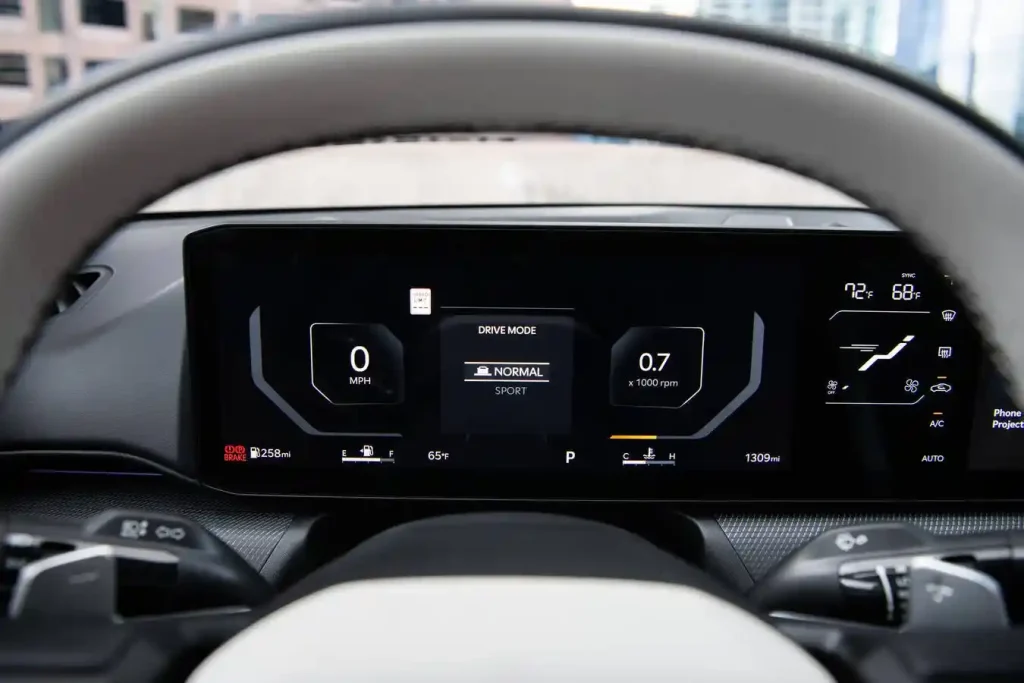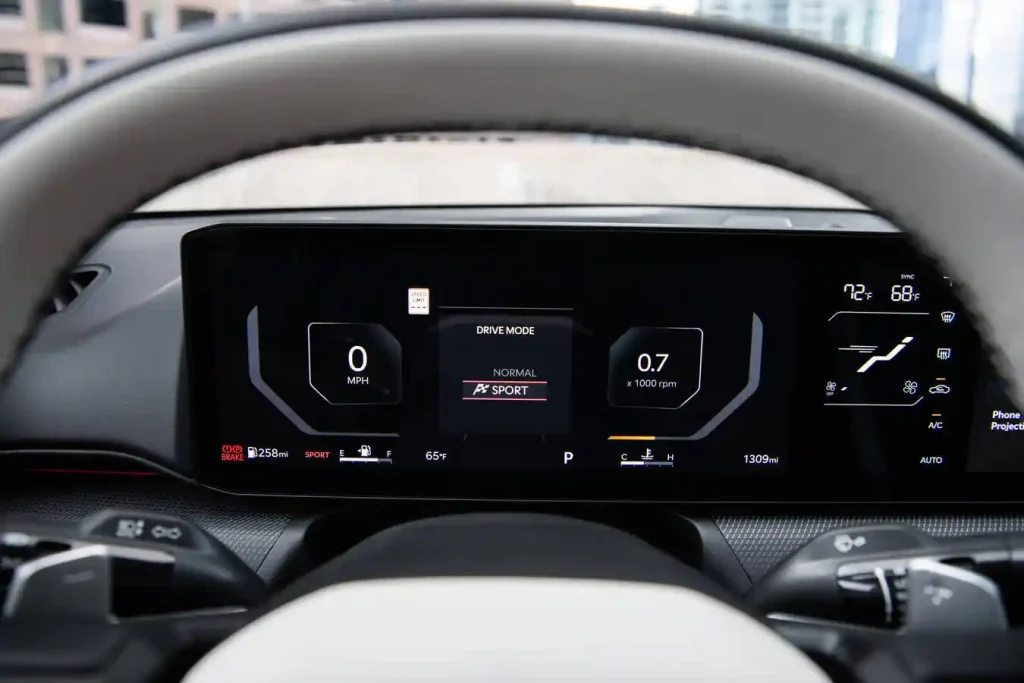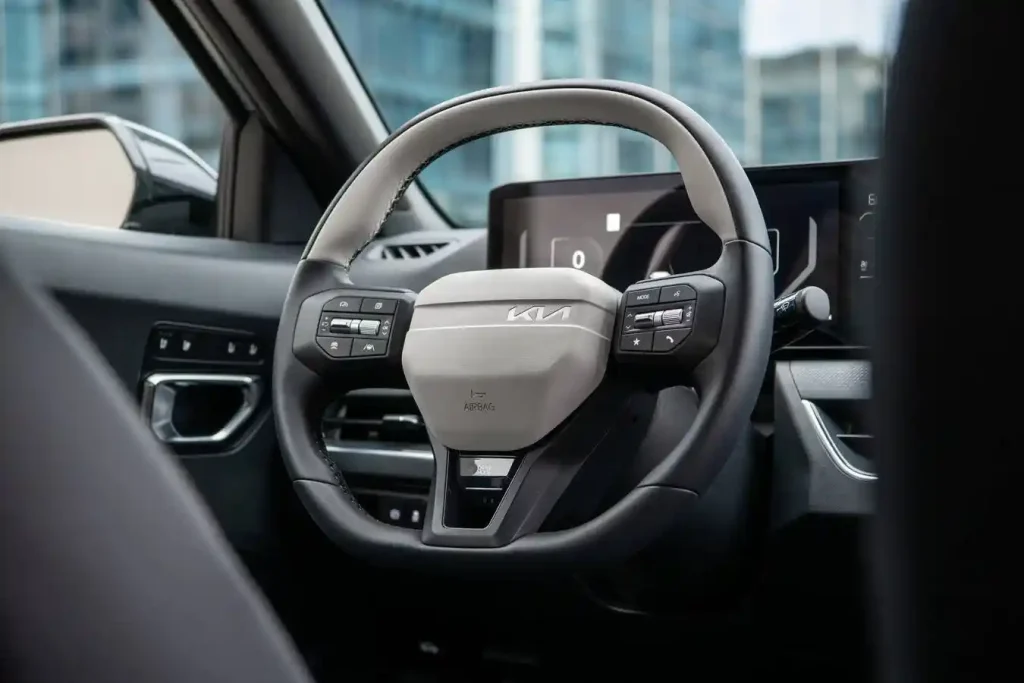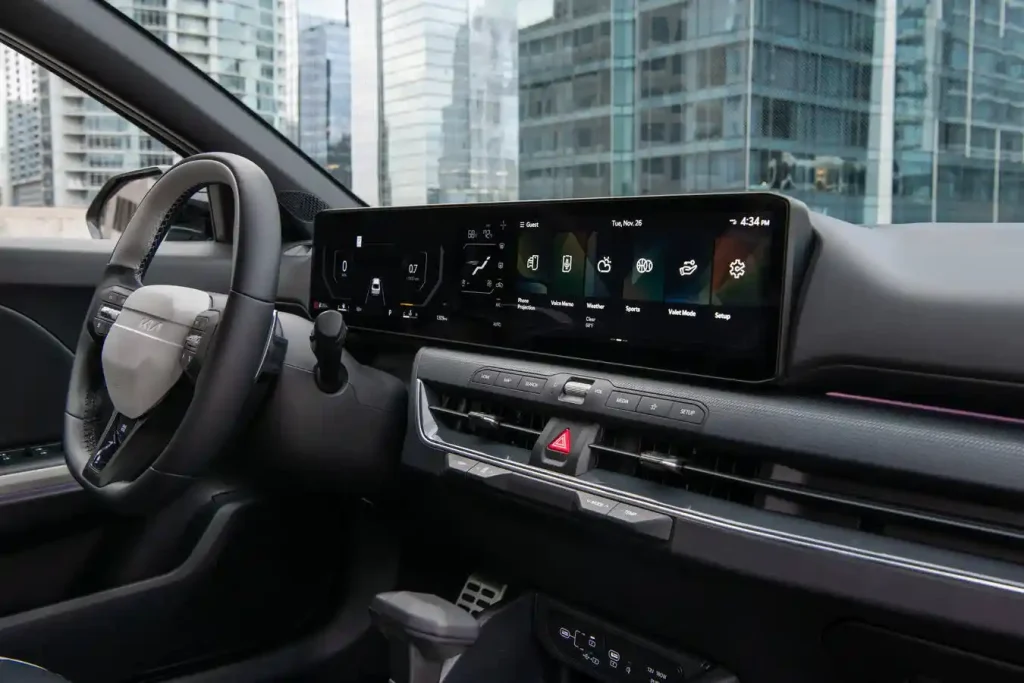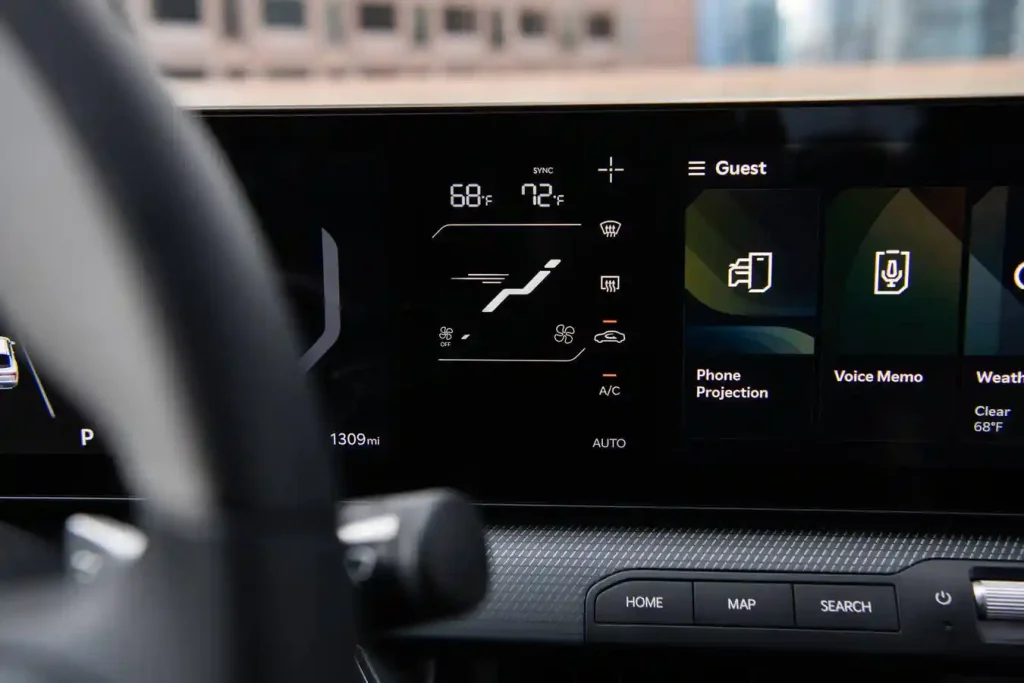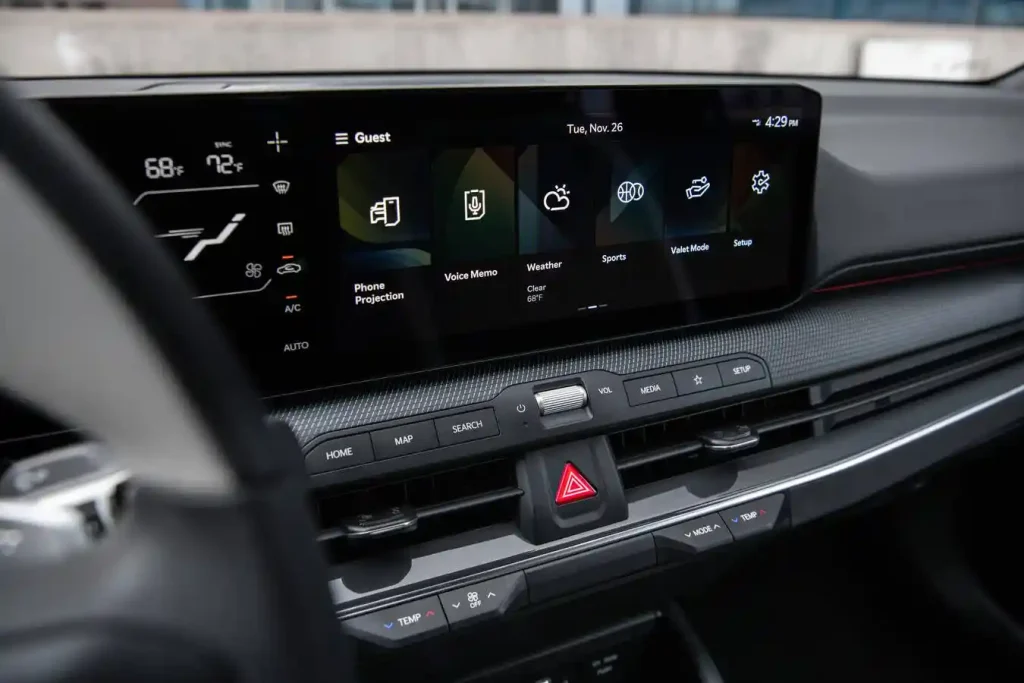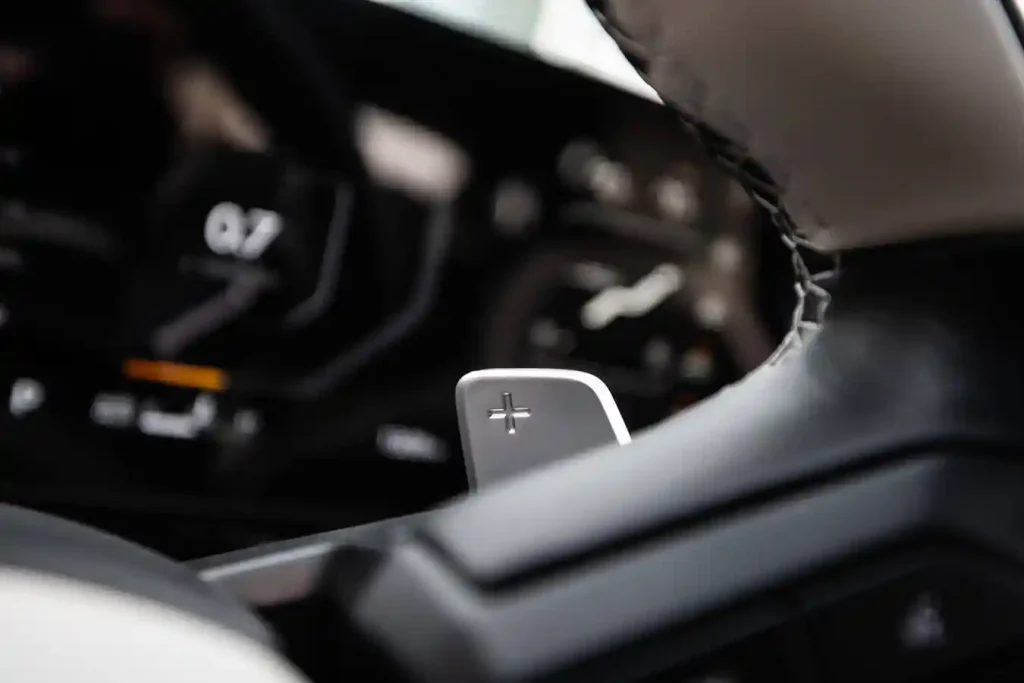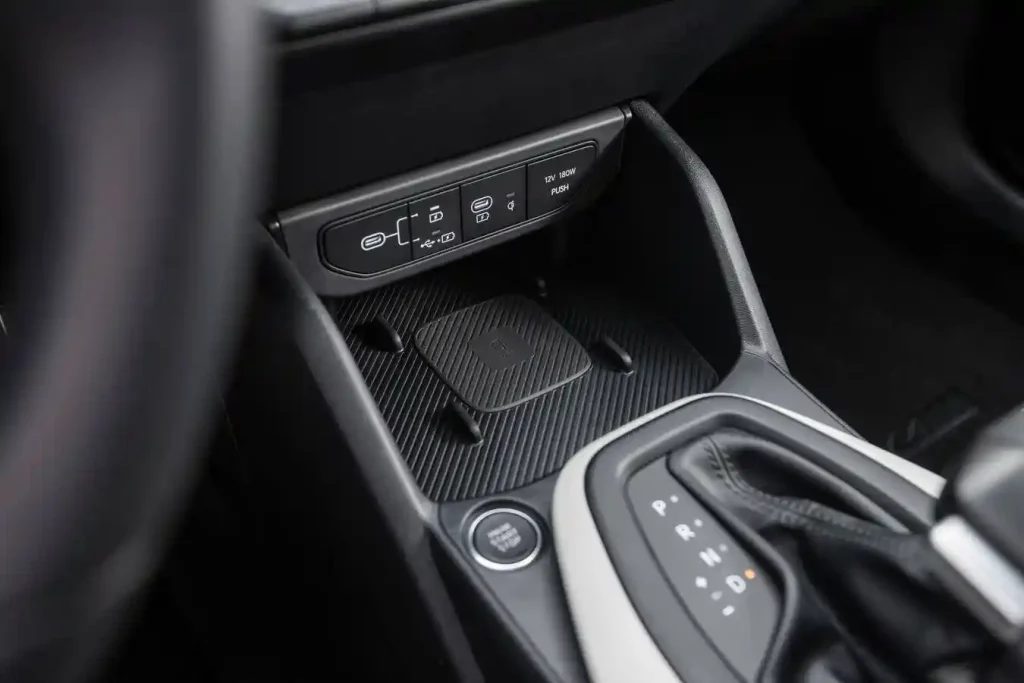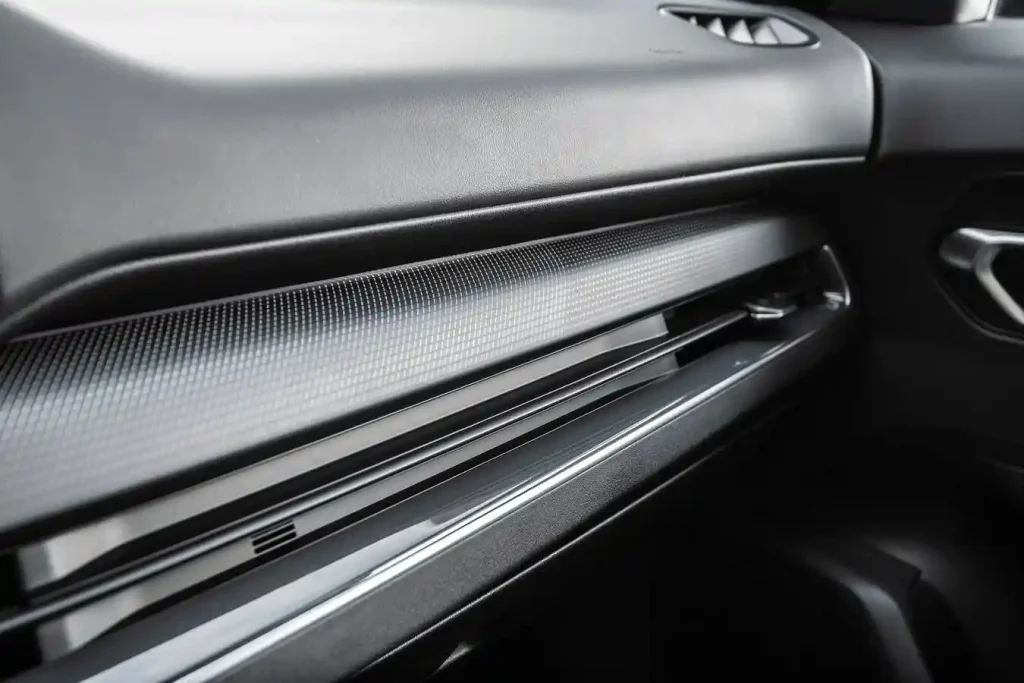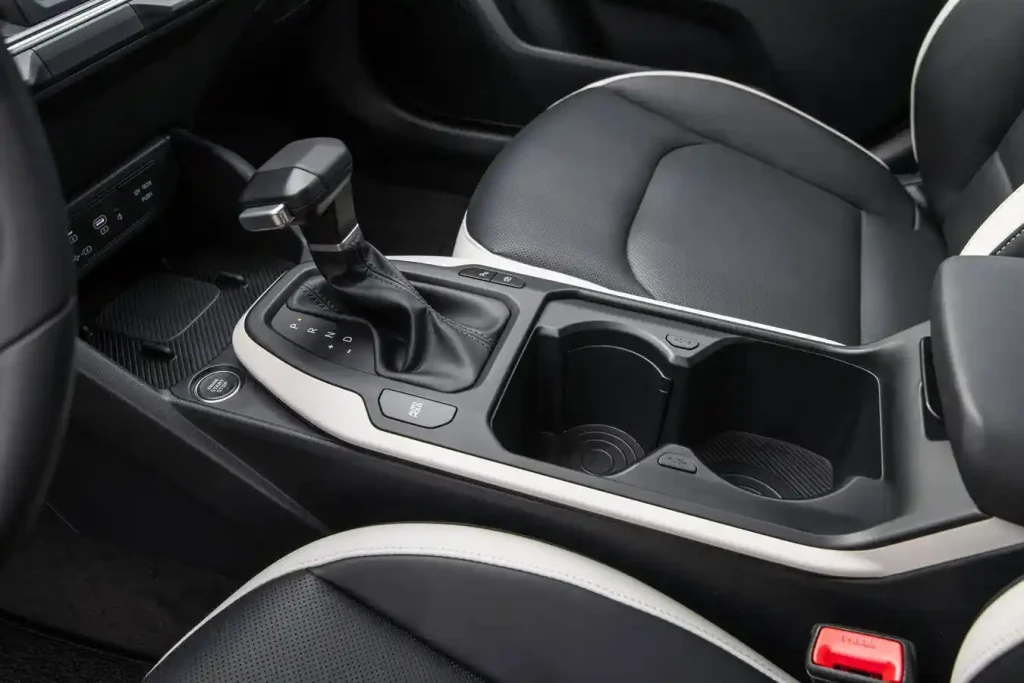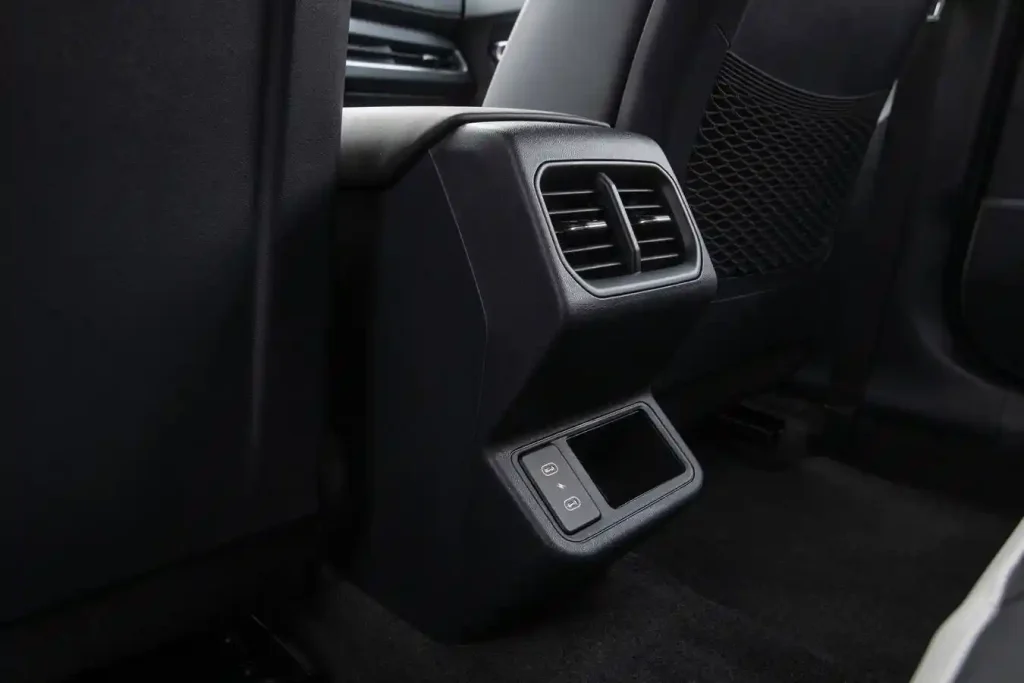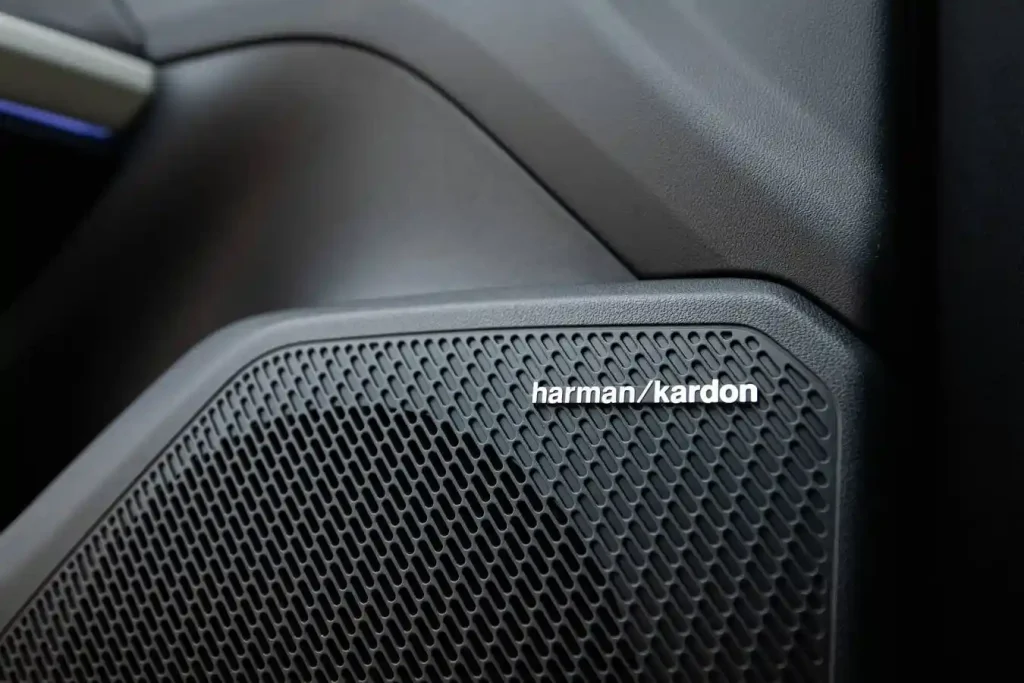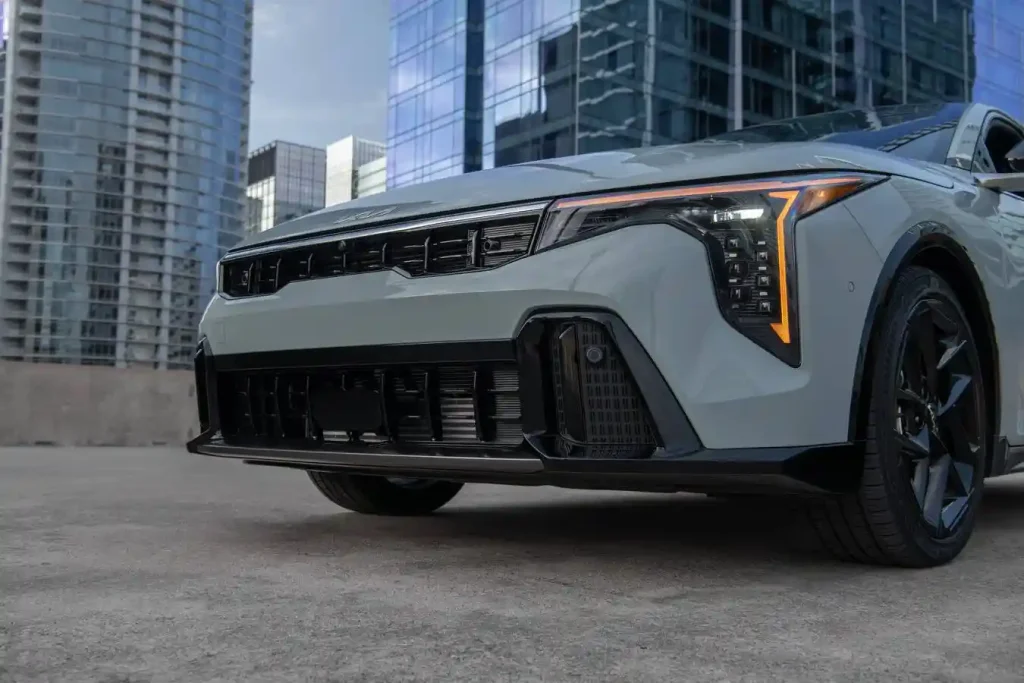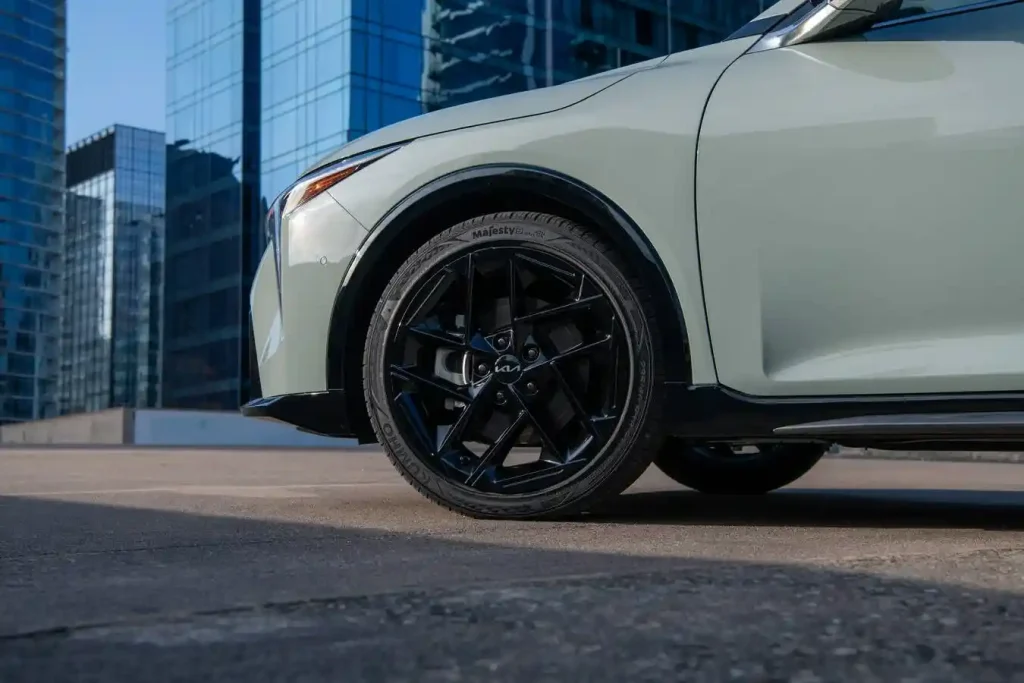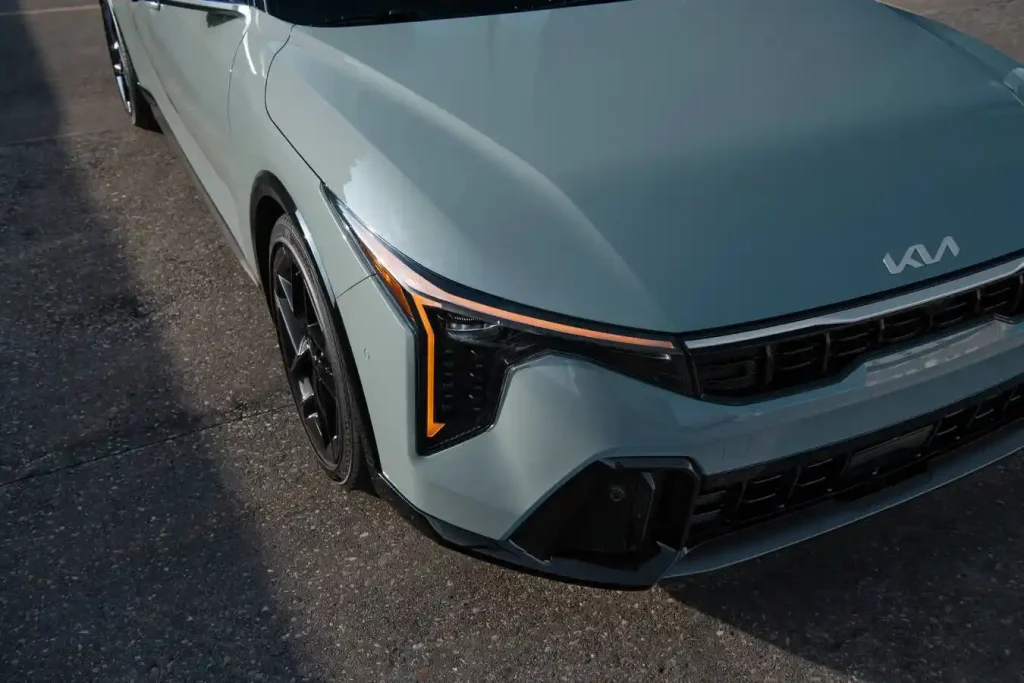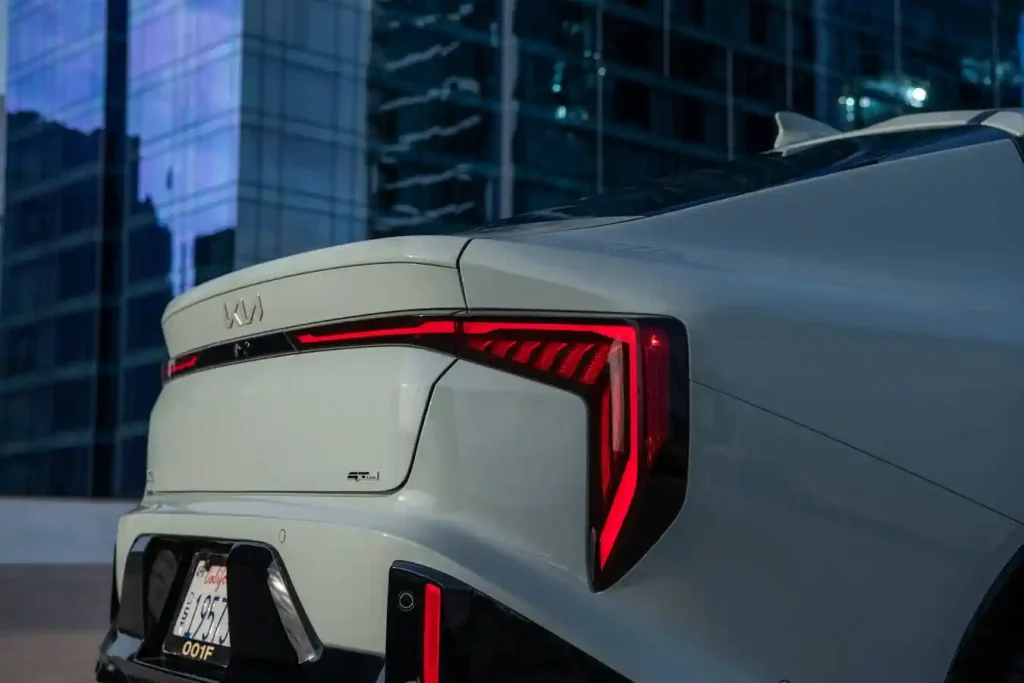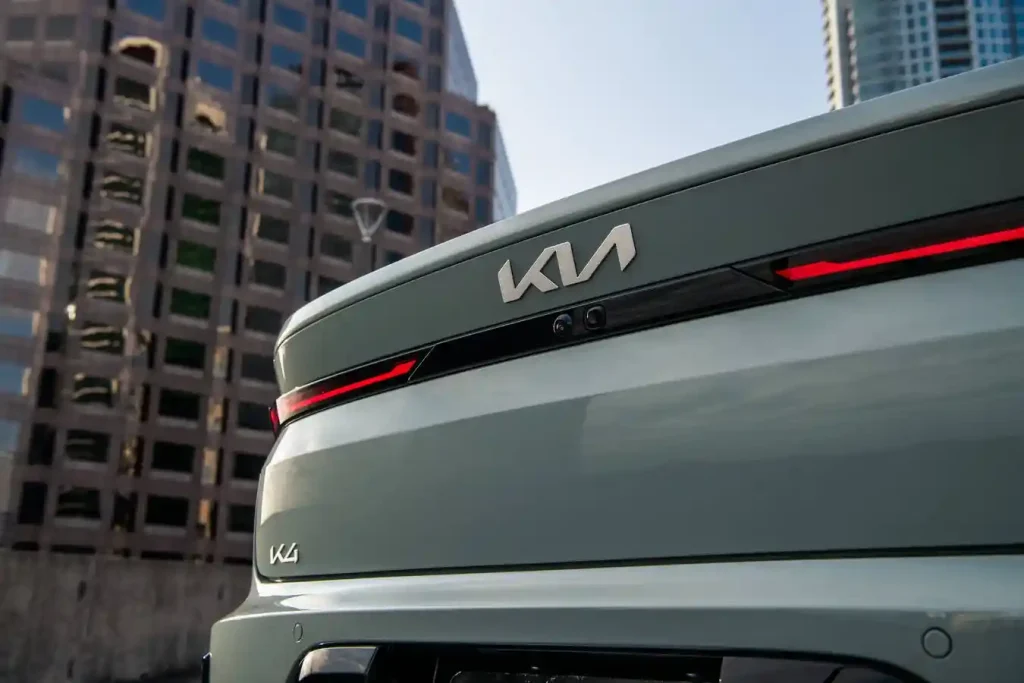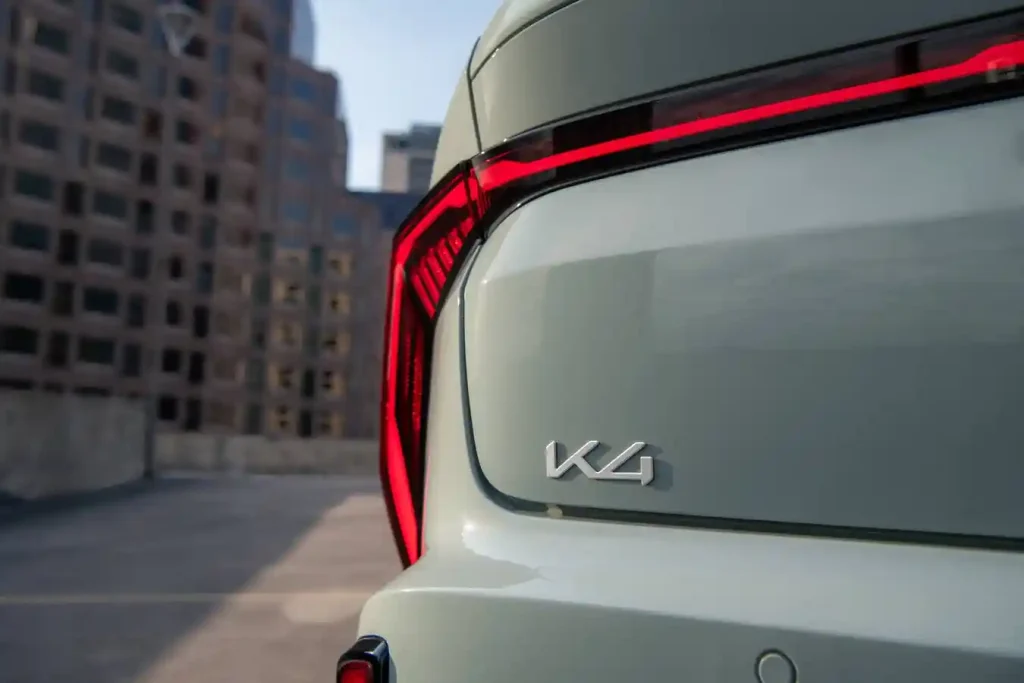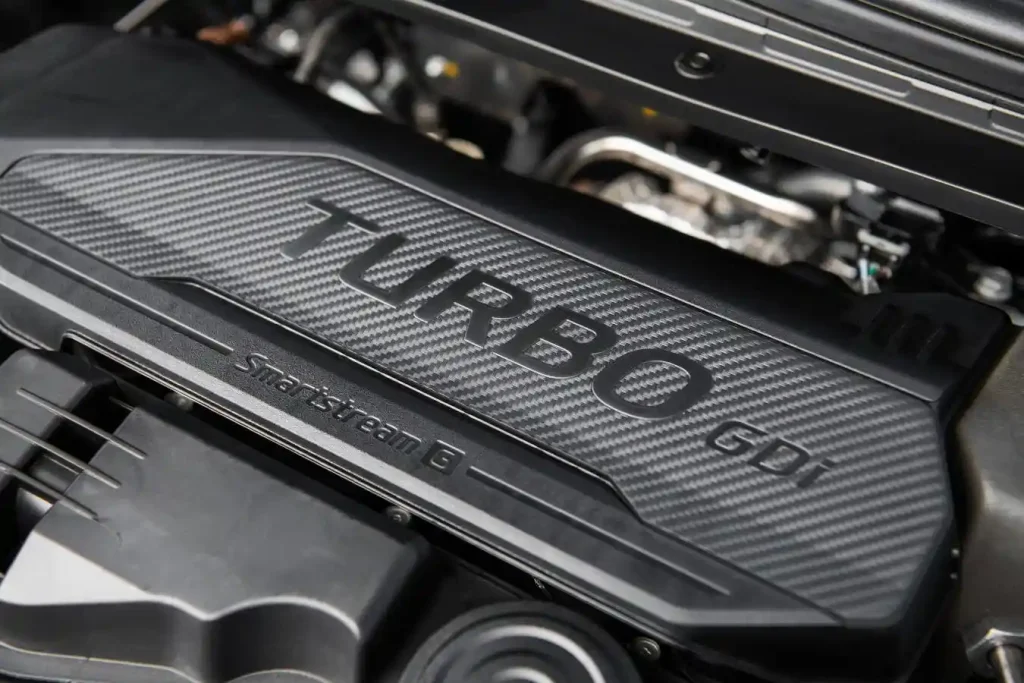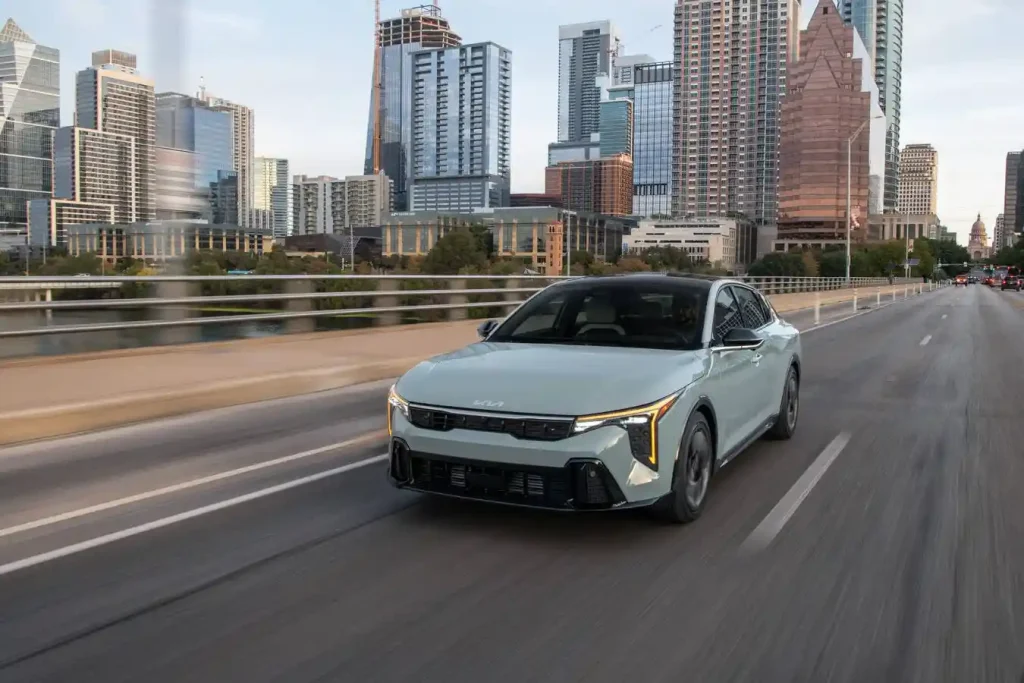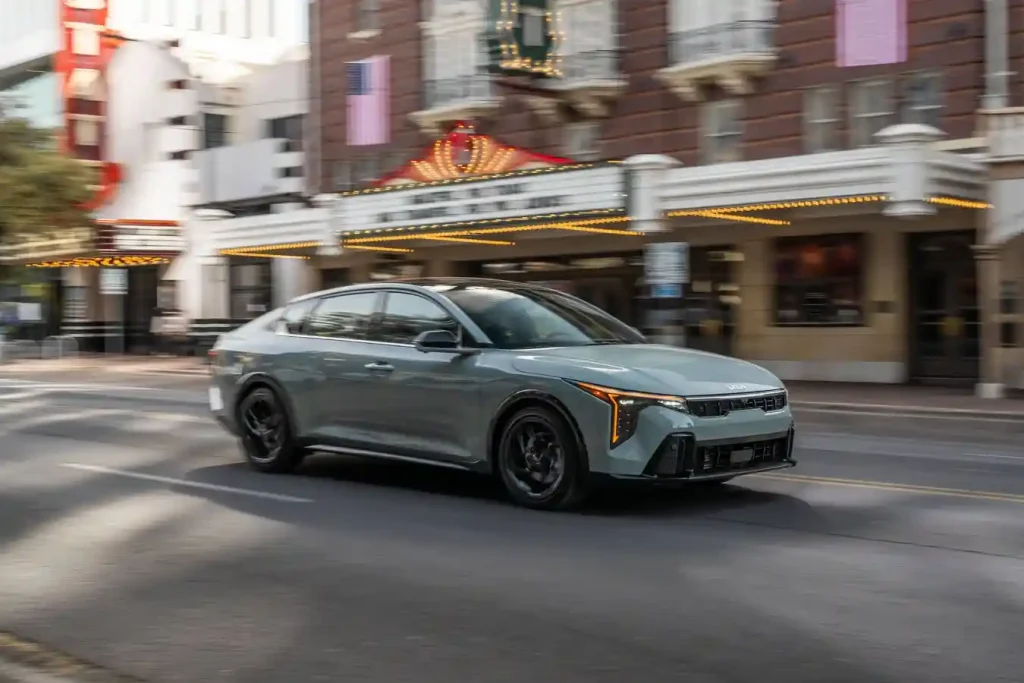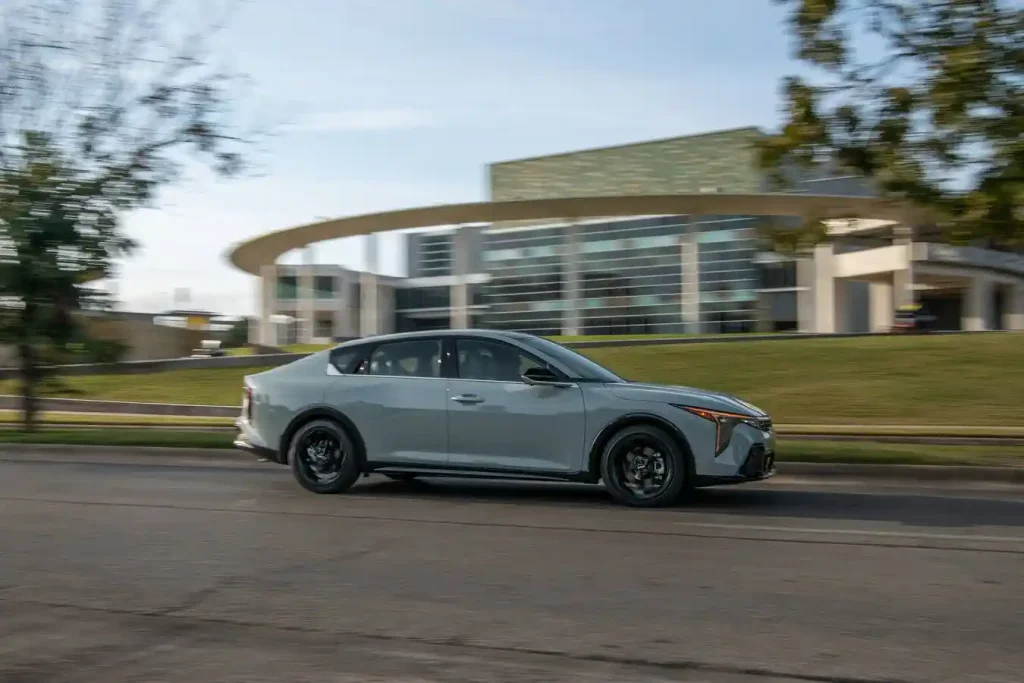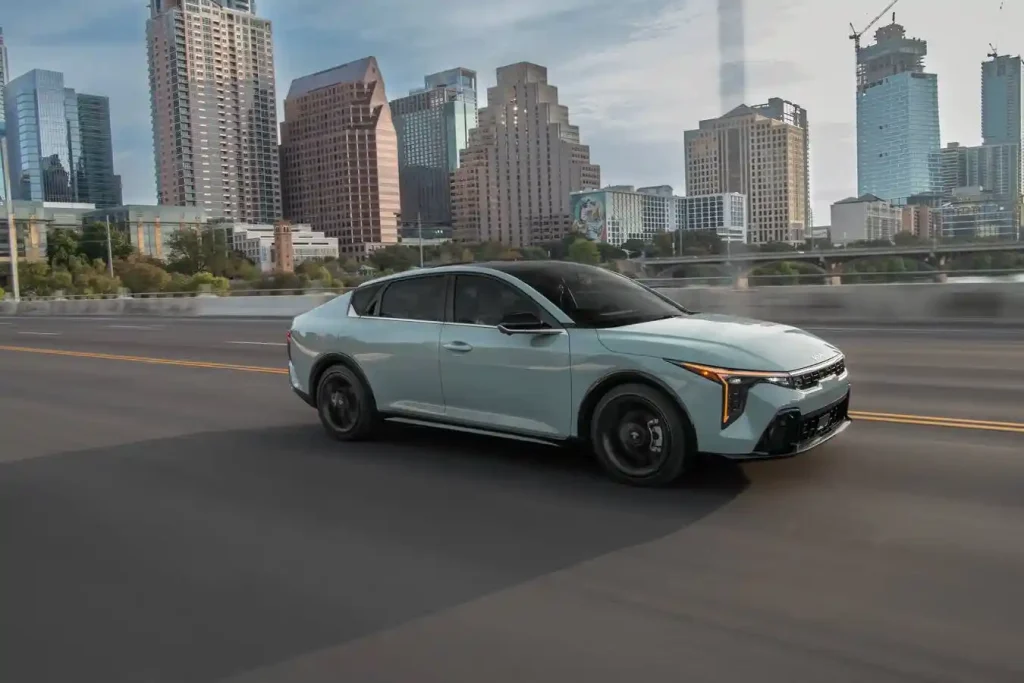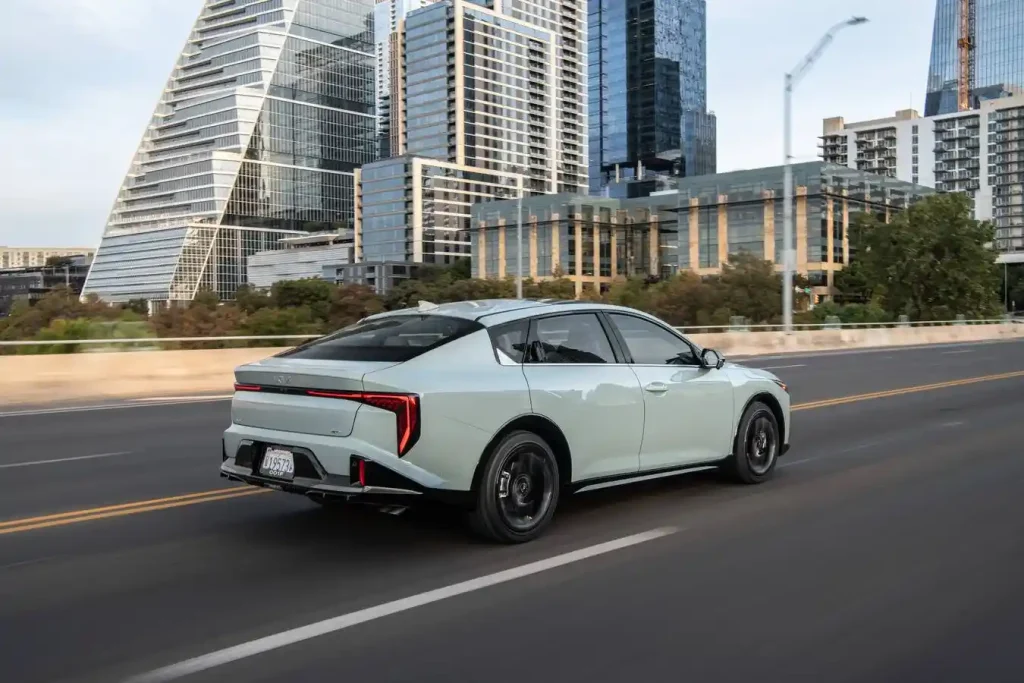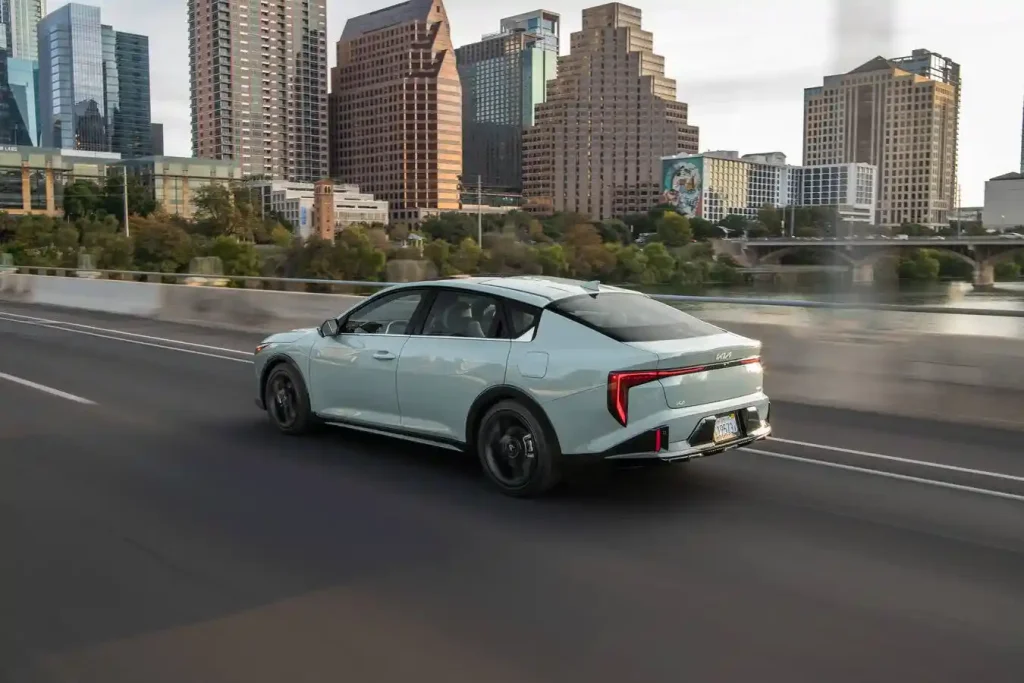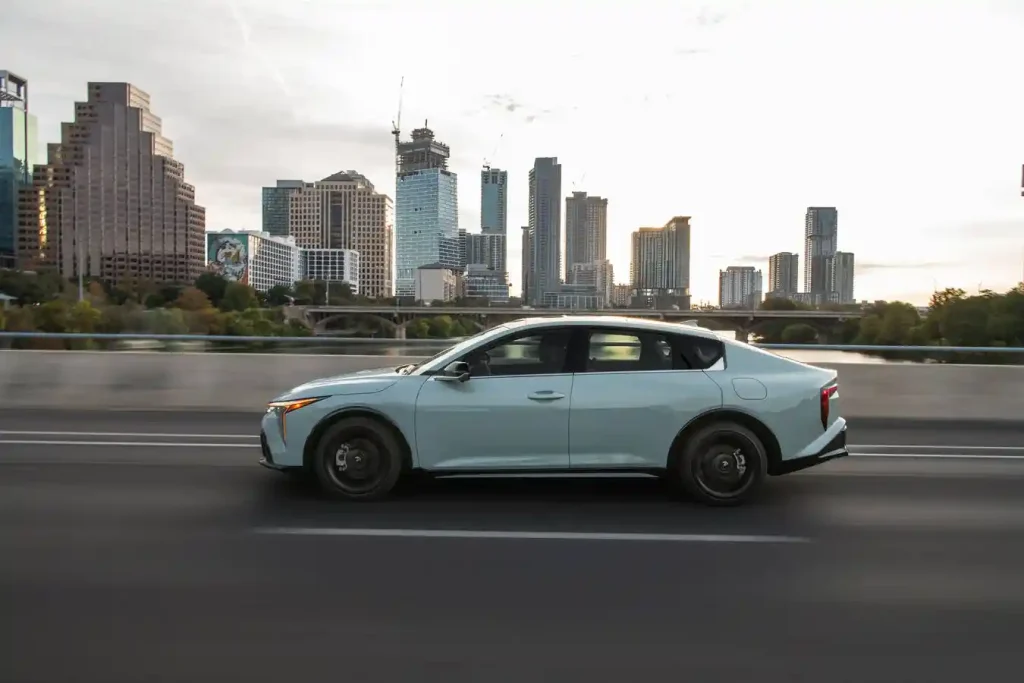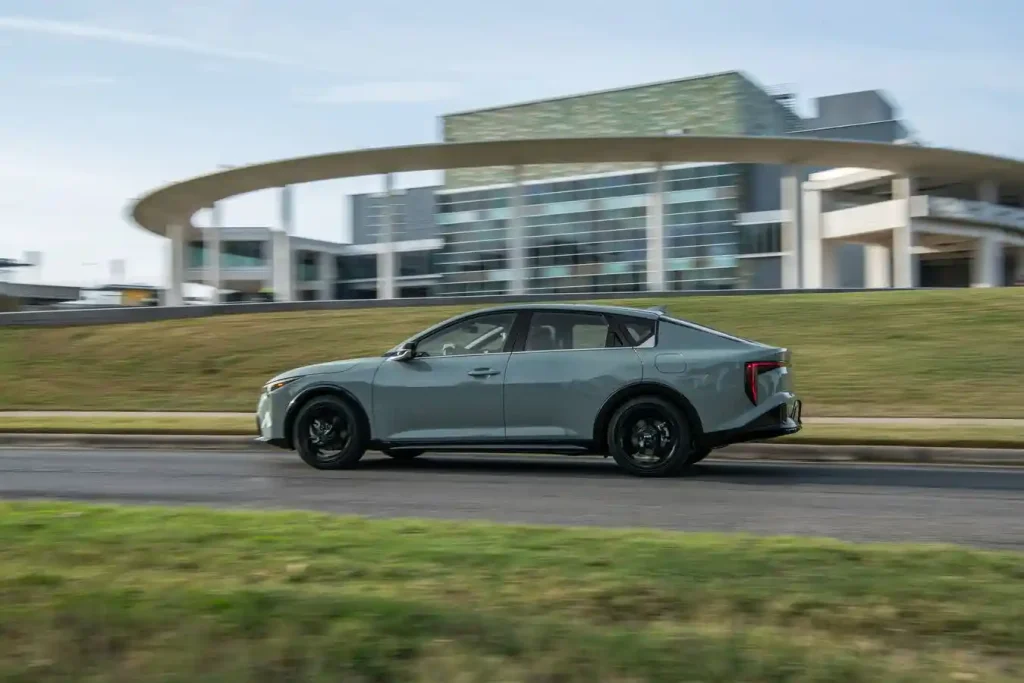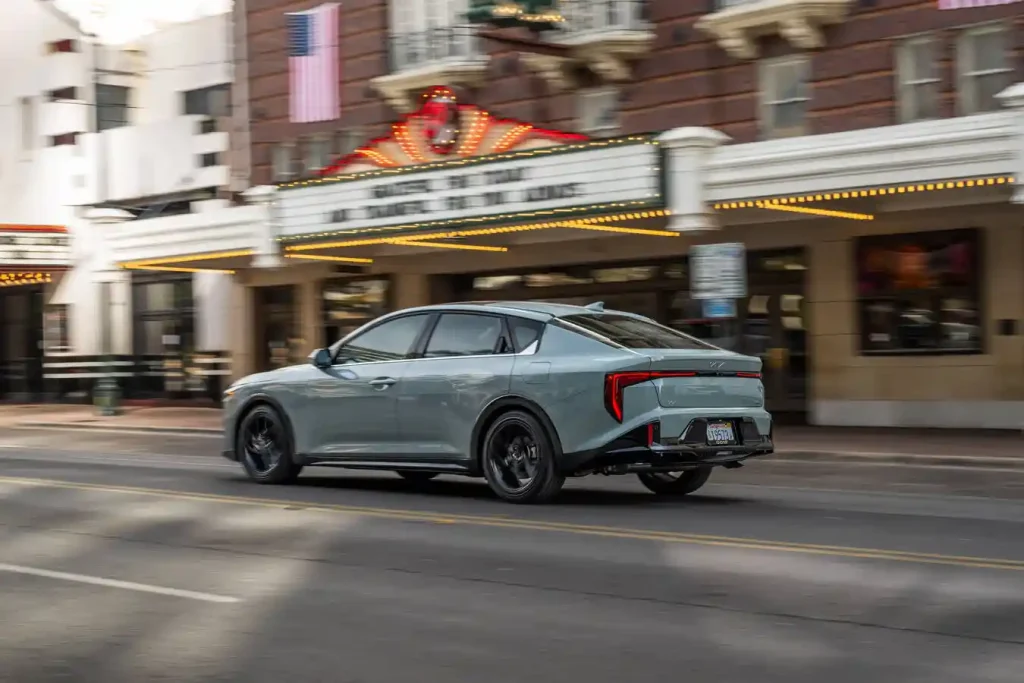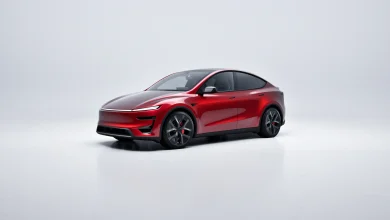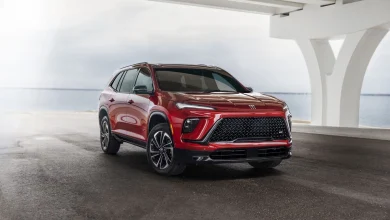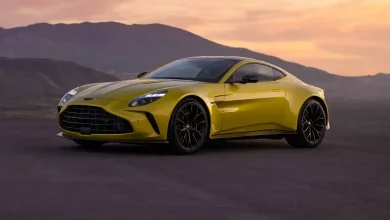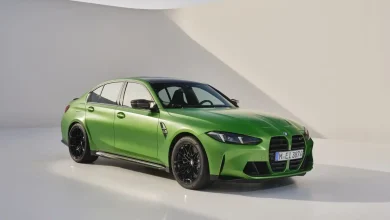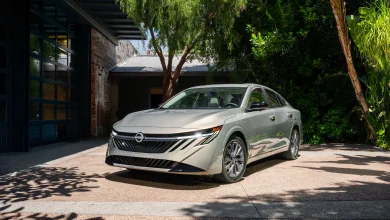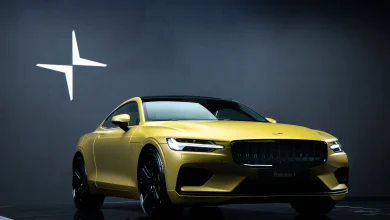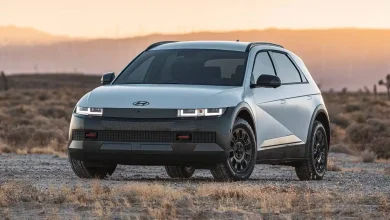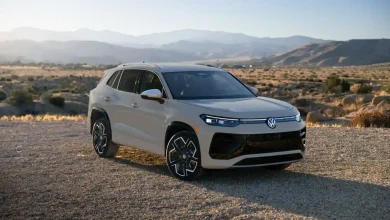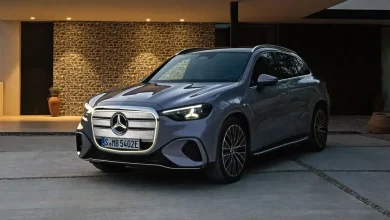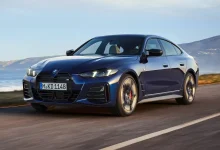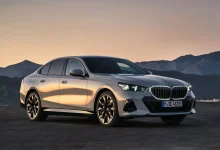2025 Kia K4 GT-Line First Test: Pushing the Limits of Speed and Style
"We get behind the wheel of Kia's stylish new K4 compact sedan once again—this time testing the version equipped with the naturally aspirated engine."
While there’s still room for improvement, the turbocharged 2025 Kia K4 GT-Line compact sedan makes a striking impression with its bold exterior design and a stylish, tech-laden cabin that competes with the best in its class—and even some above it. The turbo model also offers generous interior space and a driving experience that’s above average, though the Honda Civic continues to outperform it in several key areas.
However, that turbocharged model isn’t representative of the entire K4 lineup, as the majority of trims come equipped with a naturally aspirated engine. That’s precisely why we’re putting the non-turbo K4 GT-Line to the test.
Although it isn’t the flagship of the lineup—that title goes to the Turbo 2025 Kia K4 GT-Line—the GT-Line sits just below it. This trim comes equipped with a 2.0-liter inline-four engine paired with a continuously variable transmission (CVT), rather than the 1.6-liter turbocharged four-cylinder and eight-speed automatic found in the higher trim.
Should Have Kept the Gas Tank
The base engine from the Forte carries over to the 2025 Kia K4 GT-Line, delivering similar fuel efficiency. Like most non-turbo 2024 Fortes, the K4 achieves 39 mpg on the highway and 29 mpg in the city. However, there’s a catch—the fuel tank has been downsized from 14.0 gallons to just 12.4, limiting overall driving range.
For context, the non-hybrid 2025 Toyota Corolla FX sedan—equipped with a similar 2.0-liter engine, CVT, and front-wheel drive—achieves 31 mpg in the city and the same 39 mpg on the highway. Thanks to its larger 13.2-gallon fuel tank, the Corolla offers roughly 40 more miles of estimated driving range than the K4.
Dulled by Weight
Our test K4 tips the scales heavier than both its predecessor and the Toyota competitor, affecting nearly every aspect of its performance—not just fuel efficiency. For comparison, the 2019 Forte EX, the last 2.0-liter non-turbo sedan reviewed by HARJA, weighed just 2,885 pounds—256 pounds lighter than the current K4.
It’s no surprise that the 2025 Kia K4 GT-Line acceleration feels sluggish, and for some drivers, it might even seem borderline slow—taking 9.1 seconds to go from 0 to 60 mph. By comparison, the Corolla FX is a full second quicker at 8.1 seconds, while the Corolla XSE and the previous Forte complete the sprint in 8.2 seconds. The K4 Turbo leaves them all behind with a 7.1-second time, shaving off a full two seconds. There’s no launch control feature, and regardless of whether you’re in Normal or Sport mode, the fastest takeoff involves revving to 2,100 rpm before releasing the brake.
Mass also affects the K4’s handling, especially during turns. All GT-Line models, whether turbocharged or not, are equipped with an independent rear suspension, while the lower trims use a torsion beam setup. The multilink suspension improves both everyday driving and performance handling, but other factors—such as the K4’s transmission tuning and traction control system—restrict the car’s ability to push harder. In particular, stability control frequently steps in, limiting the vehicle’s full potential.
Similar to the turbo variant, this 2025 Kia K4 GT-Line offers steering that’s responsive but somewhat artificial in feel. Ride comfort should meet the expectations of most buyers, though some road noise and harshness do make their way into the cabin—particularly at higher speeds and on rougher pavement.
A Better Binnacle?
Inside the cabin, the 2025 Kia K4 GT-Line features a BMW-inspired curved display that integrates two 12.3-inch screens—one for the driver and another for the touchscreen infotainment system. The visuals are impressive, boasting excellent resolution and significantly larger displays compared to the Corolla’s 7.0-inch driver screen and 10.5-inch touchscreen. Our only gripe is with the backup camera, which appears letterboxed and only occupies the center portion of the infotainment screen, though the image quality itself is razor-sharp.
The 5.5-inch touch-sensitive climate control panel, positioned between the two larger screens, is poorly placed. It’s partially blocked by the squircle-shaped steering wheel, and when the driver’s right hand rests at the 2 o’clock position, the controls become completely hidden. While some physical buttons on the center stack provide useful redundancy, it would be far better if the touchscreen were fully visible. As it stands, drivers have to awkwardly glance around the steering wheel to operate the climate controls.
Generous Feature Set
This trim comes equipped with GT-Line styling, remote start, automatic headlights and high beams, and a smart trunk that opens automatically after you stand nearby for three seconds—though it isn’t fully powered. It also offers wireless Apple CarPlay and Android Auto, a wireless phone charger, two USB-C ports in the front and two in the rear, heated front seats, and a power-adjustable driver’s seat. On top of that, a wide range of driver assistance features is included.
Our test vehicle was equipped with the optional $1,100 Premium package, which adds faux-leather seat trim, ventilated front seats, a sound-absorbing windshield, and an eight-speaker Harman Kardon premium audio system. Additionally, our model included the $900 sunroof package.
Despite the 2025 Kia K4 GT-Line well-equipped front cabin, the rear area feels sparse. The back seats offer only USB ports and a small storage cubby on the back of the center console. The trunk is even more basic, lacking any storage compartments or elastic nets.
When it comes to space for passengers and cargo, the K4 offers significantly more rear legroom than the Corolla—38.0 inches compared to 34.8 inches—as well as a larger cargo capacity of 14.6 cubic feet versus 13.1. Plus, a K4 hatchback model is on the way, promising even more practical storage space.
Verdict
While the turbocharged K4 earned a spot as a 2025 Car of the Year finalist, the non-turbo sedan falls short of that same appeal. Although it offers better fuel efficiency than the K4 Turbo, certain ergonomic flaws—like a low roofline that complicates entry and exit—hold it back from reaching its full potential.
Of course, the 2025 Kia K4 GT-Line offsets these drawbacks with impressive value. Our test model’s price was about $1,400 less than a comparably equipped Corolla XSE—a meaningful saving for budget-conscious buyers. That discount is even more appealing considering you get a stylish, modern vehicle with ample cargo space and a generous array of tech and convenience features.
The standard K4 might not match the excitement of the Turbo model—or rivals like the class-leading Civic—but it remains a perfectly satisfactory compact car for those comfortable cruising at a more relaxed pace.
2025 Kia K4 GT-Line Specifications
|
BASE PRICE |
$26,365 |
|
PRICE AS TESTED |
$28,365 |
|
VEHICLE LAYOUT |
Front-engine, FWD, 5-pass, 4-door internal combustion sedan |
|
POWERTRAIN |
2.0L port-injected DOHC 16-valve I-4 |
|
POWER |
147 hp @ 6,200 rpm |
|
TORQUE |
132 lb-ft @ 4,500 rpm |
|
TRANSMISSION |
Continuously variable |
|
CURB WEIGHT (F/R DIST) |
3,141 lb (59/41%) |
|
WHEELBASE |
107.1 in |
|
LENGTH x WIDTH x HEIGHT |
185.4 x 72.8 x 55.9 in |
|
TIRES |
Kumho Majesty 9 Solus TA91 K-Silent |
|
EPA FUEL ECONOMY, |
29/39/33 mpg |
|
EPA RANGE |
409 mi |
|
ON SALE |
Now |
|
HARJA Test Results |
|
|
0-60 MPH |
9.1 sec |
|
QUARTER MILE |
17.0 sec @ 85.3 mph |
|
BRAKING, 60-0 MPH |
121 ft |
|
LATERAL ACCELERATION |
0.81 g |
|
FIGURE-EIGHT LAP |
28.0 sec @ 0.60 g (avg) |
